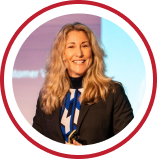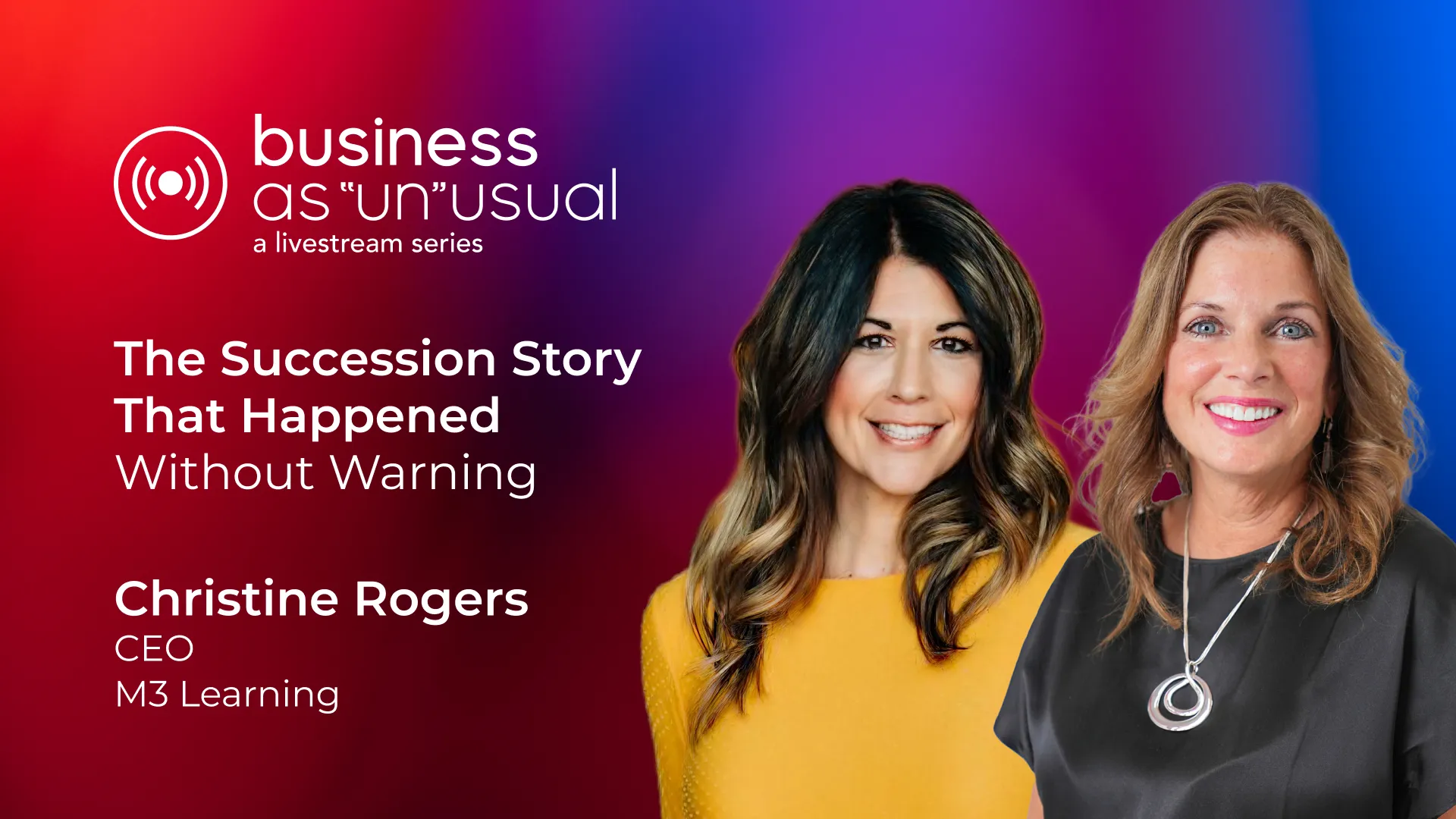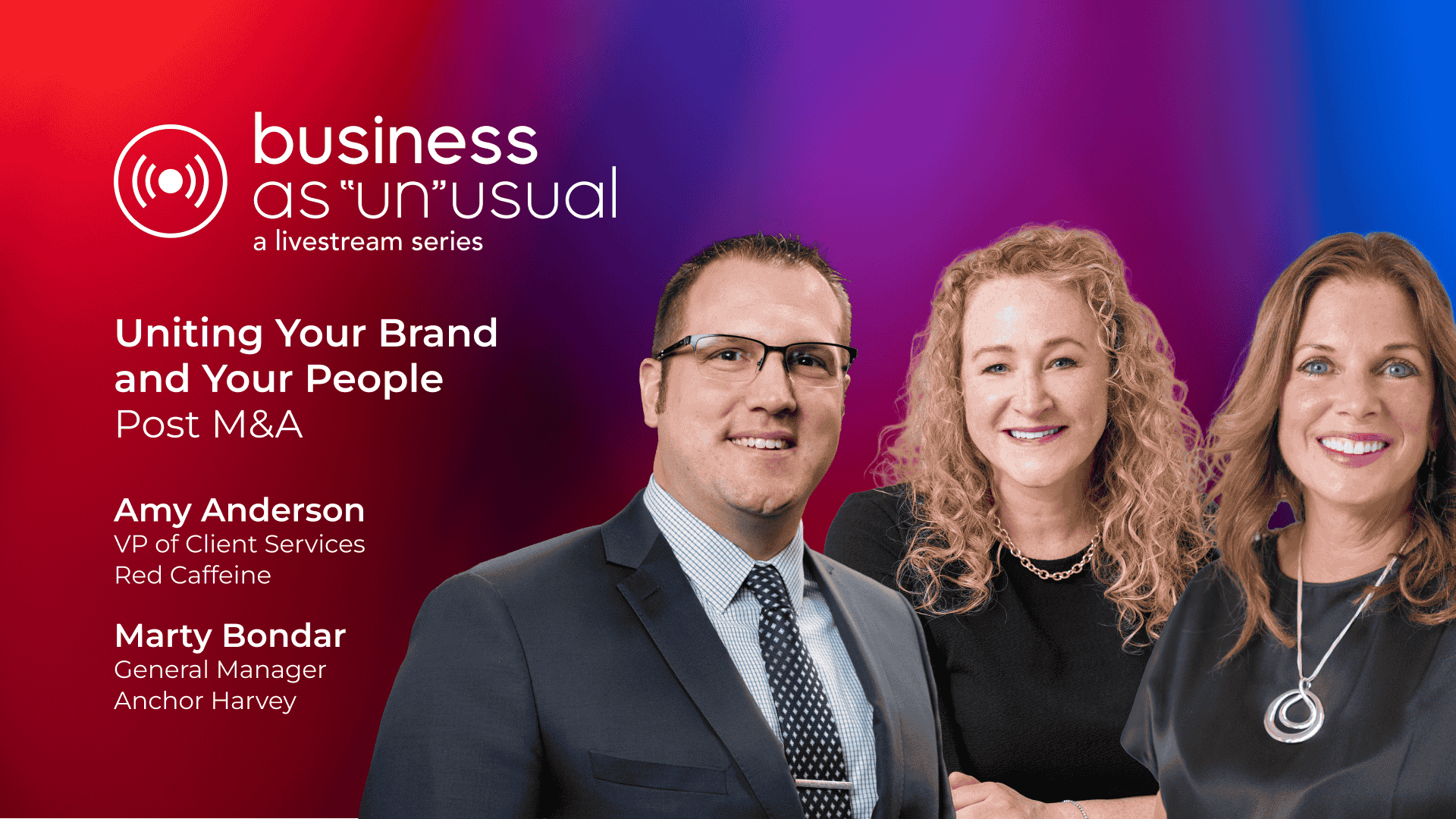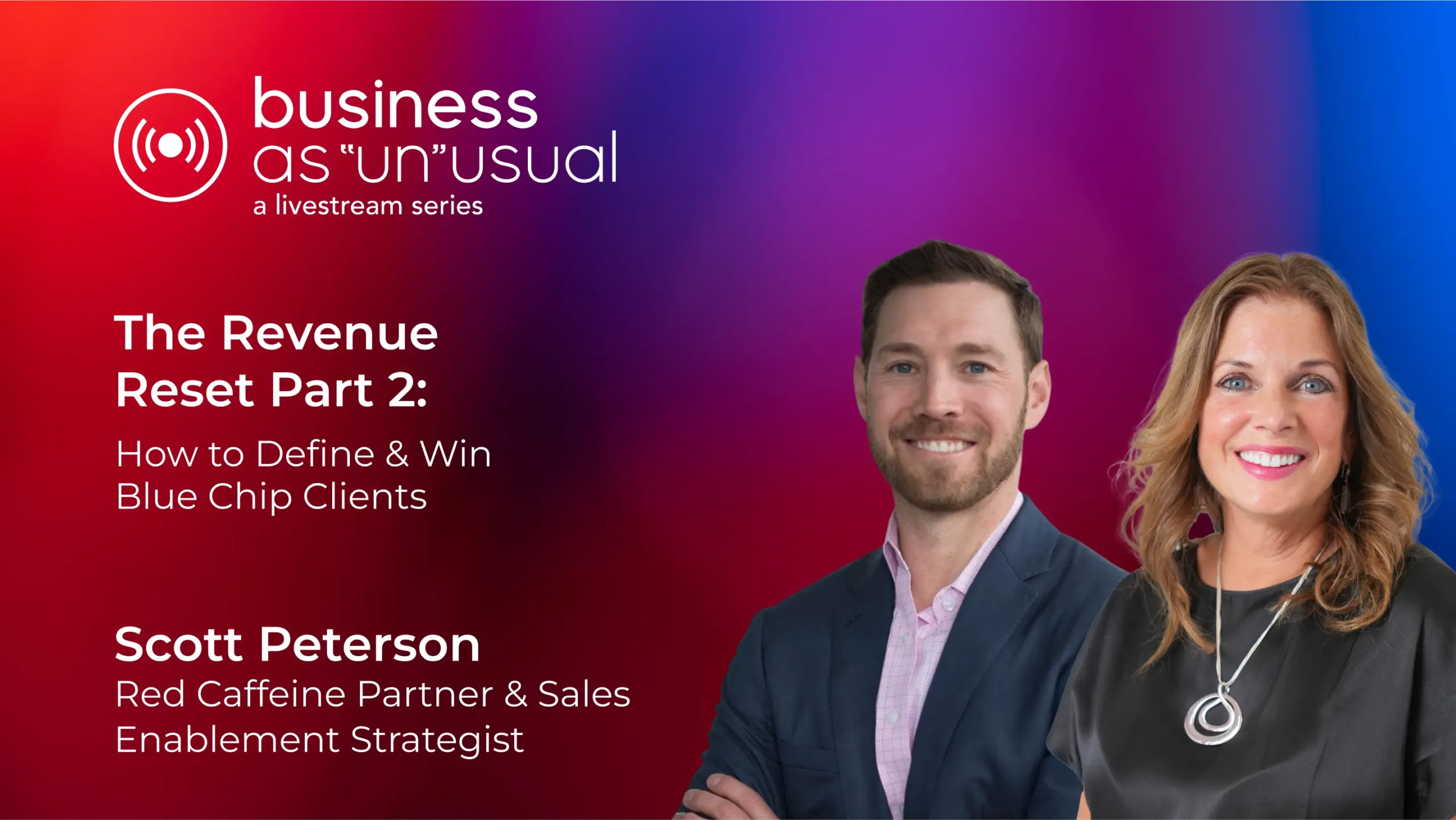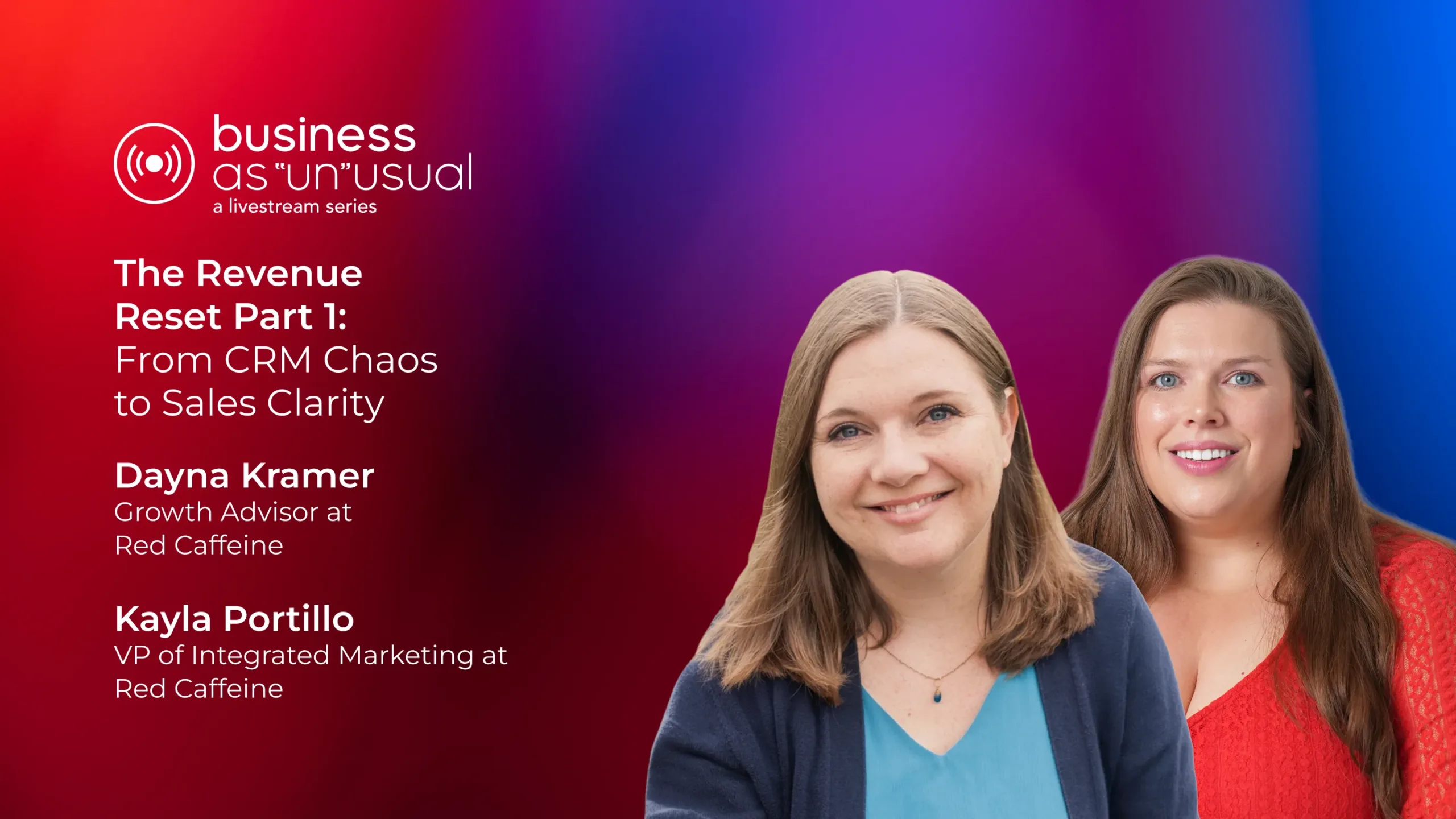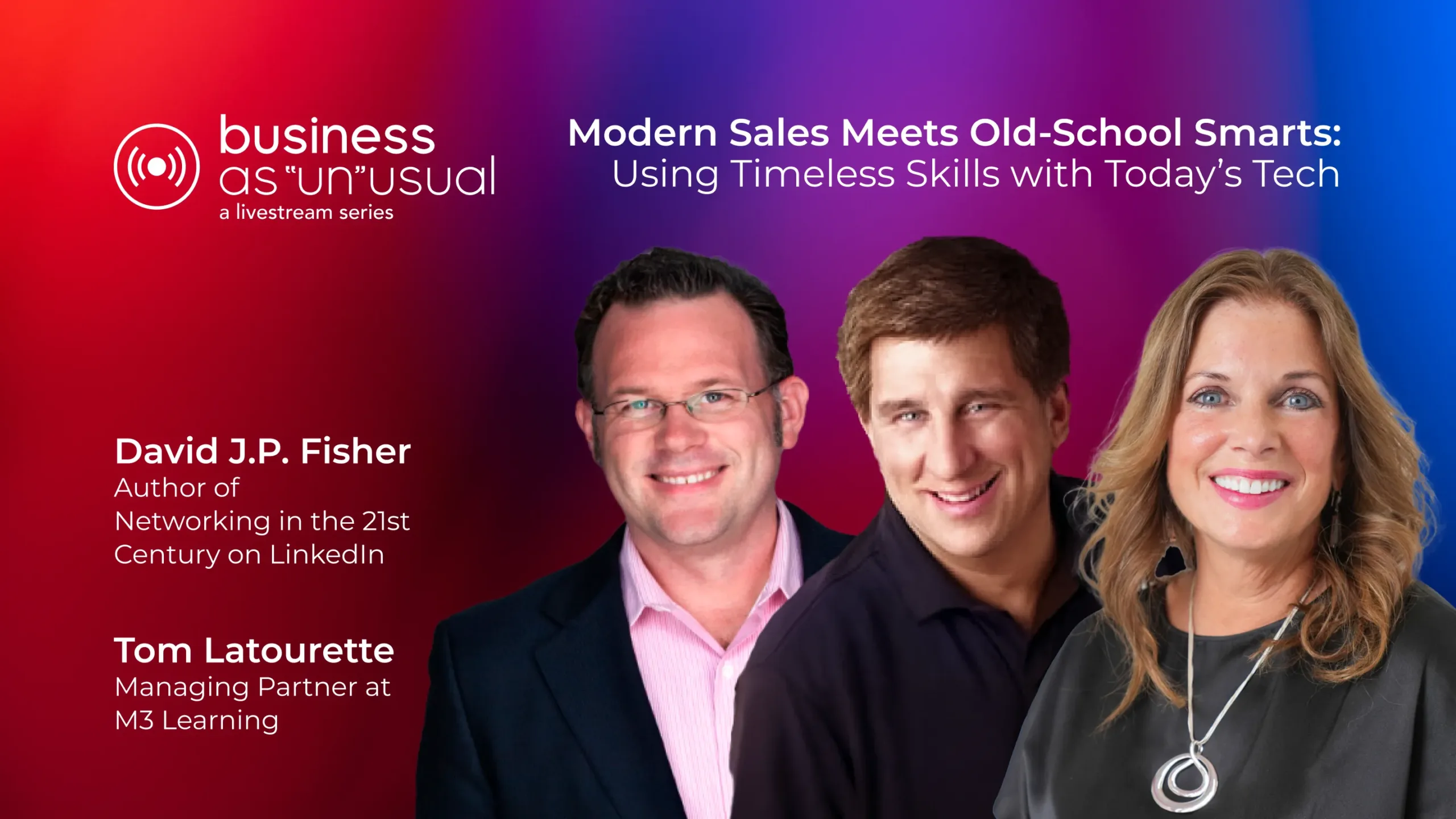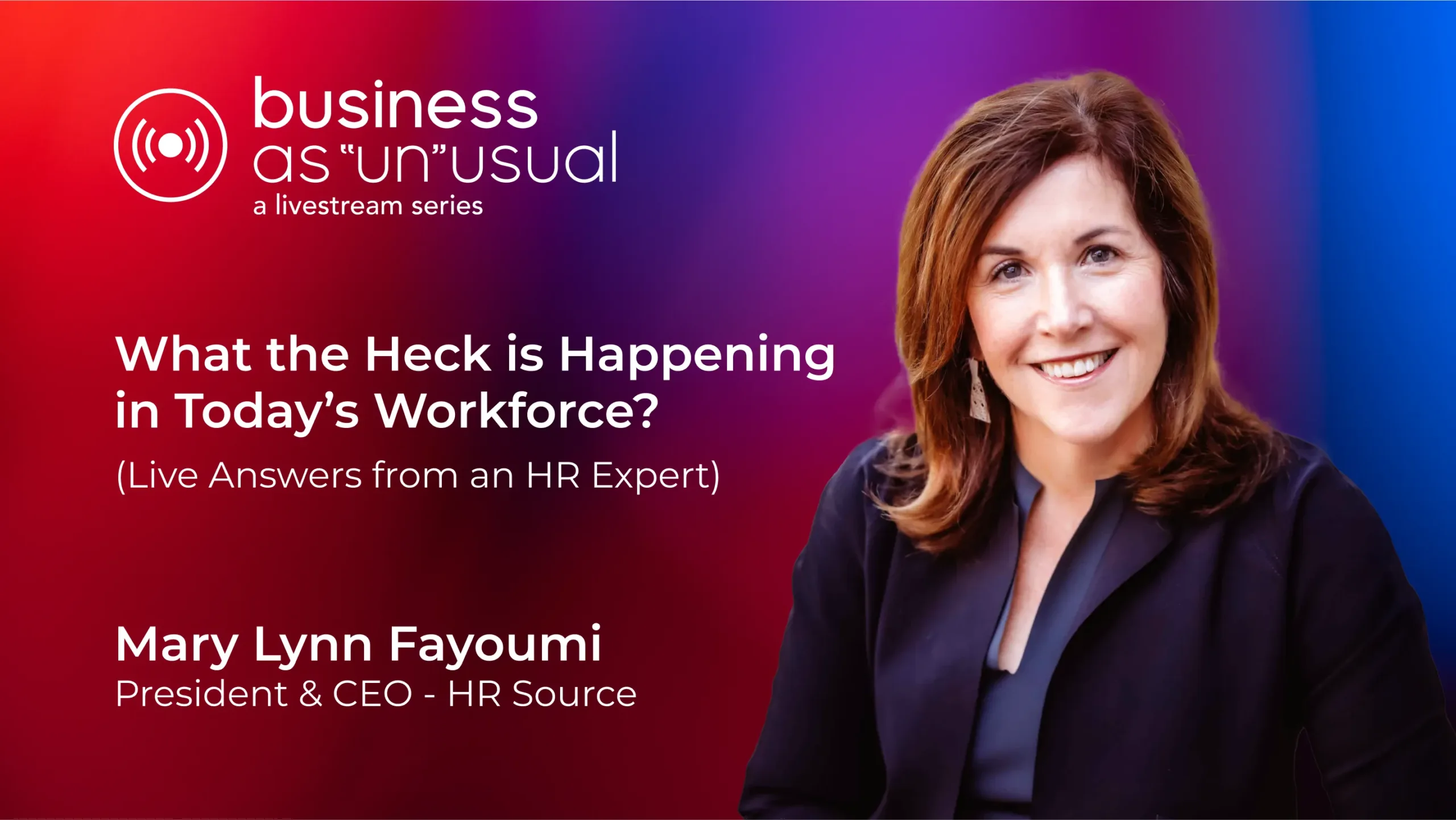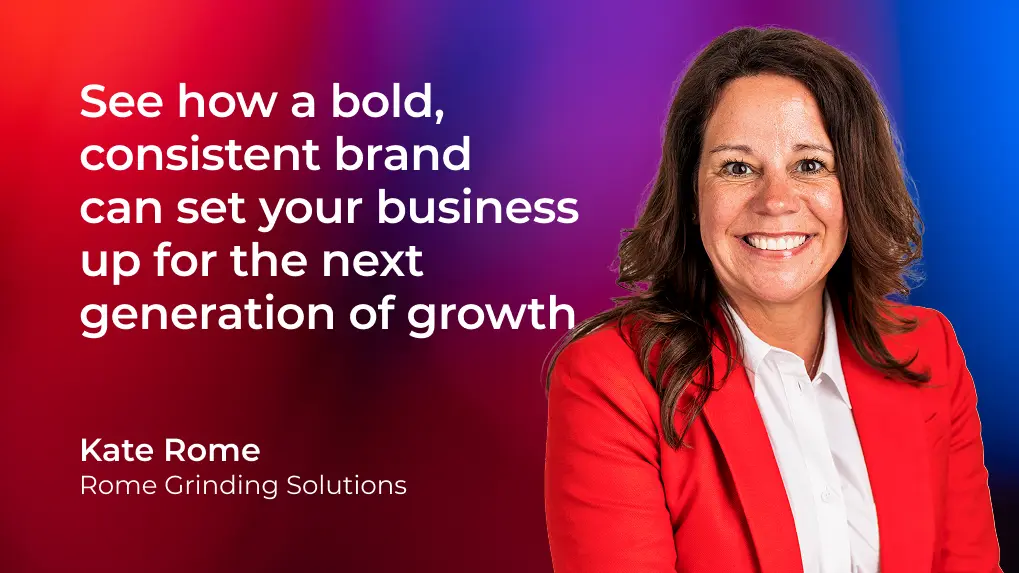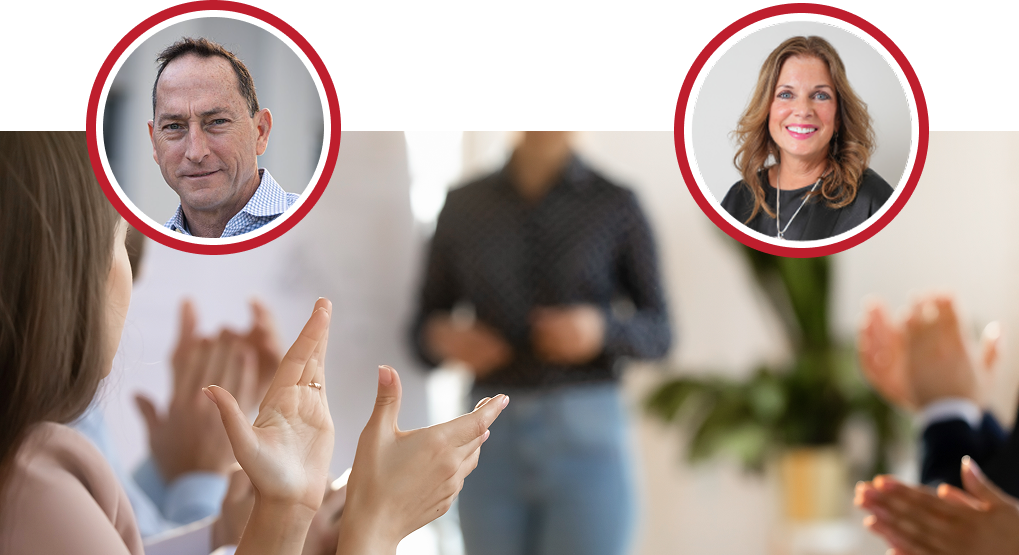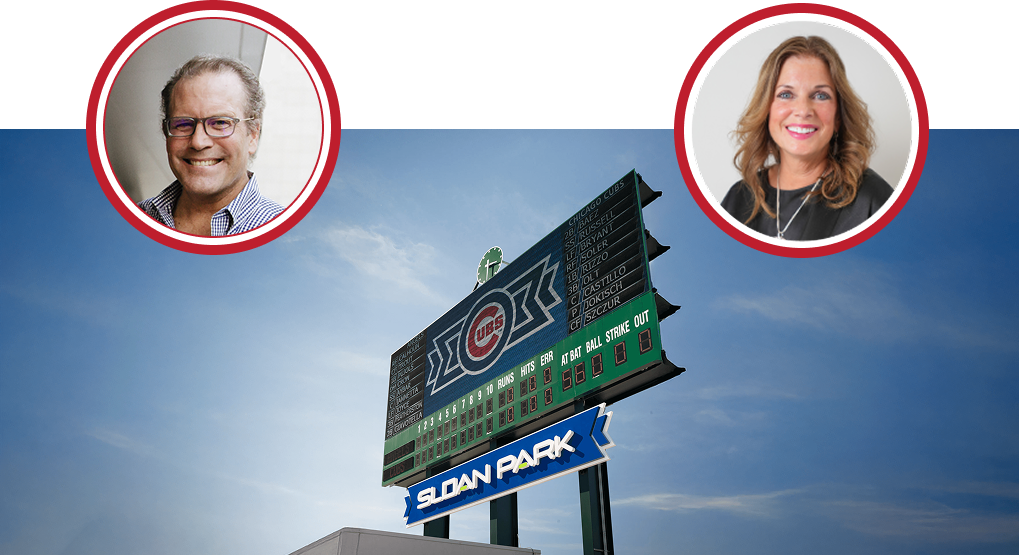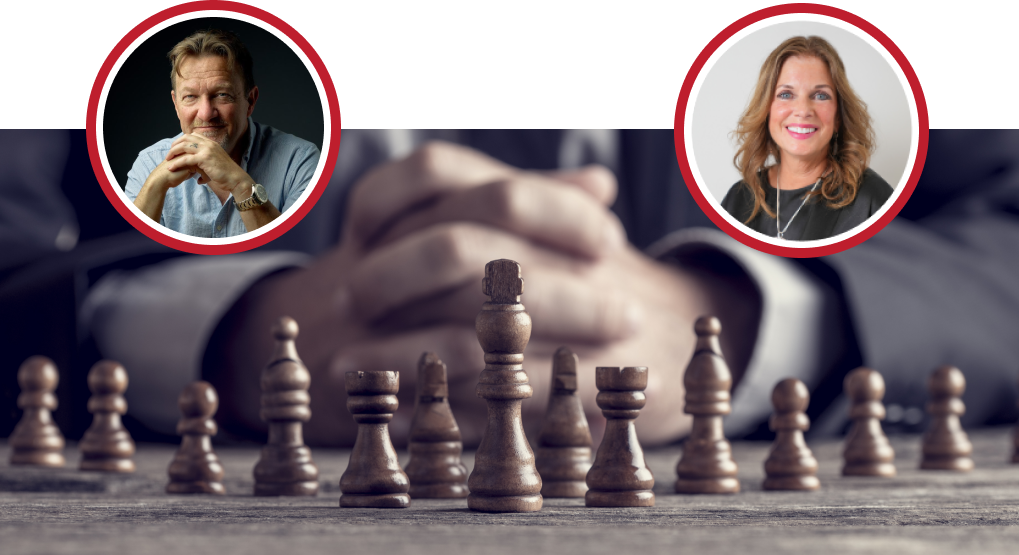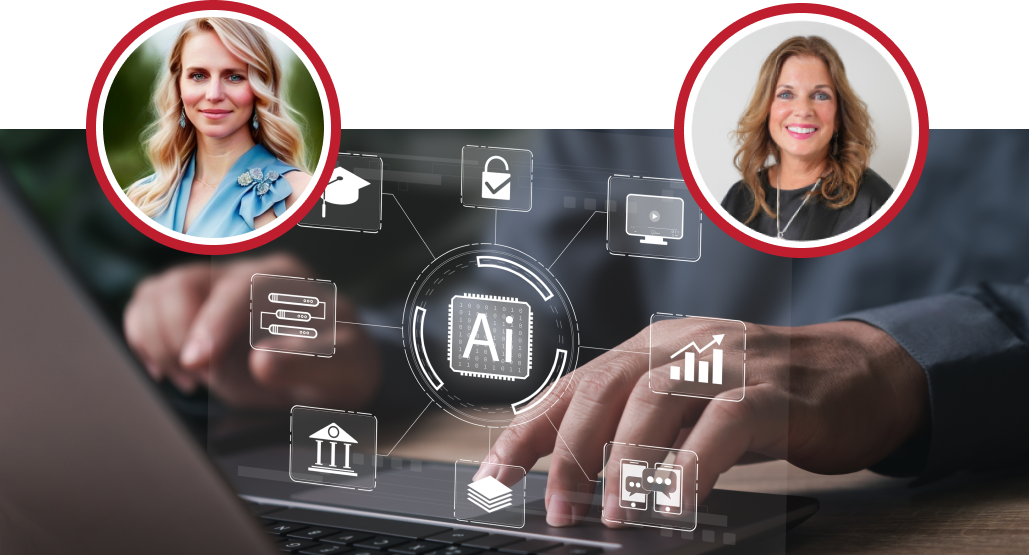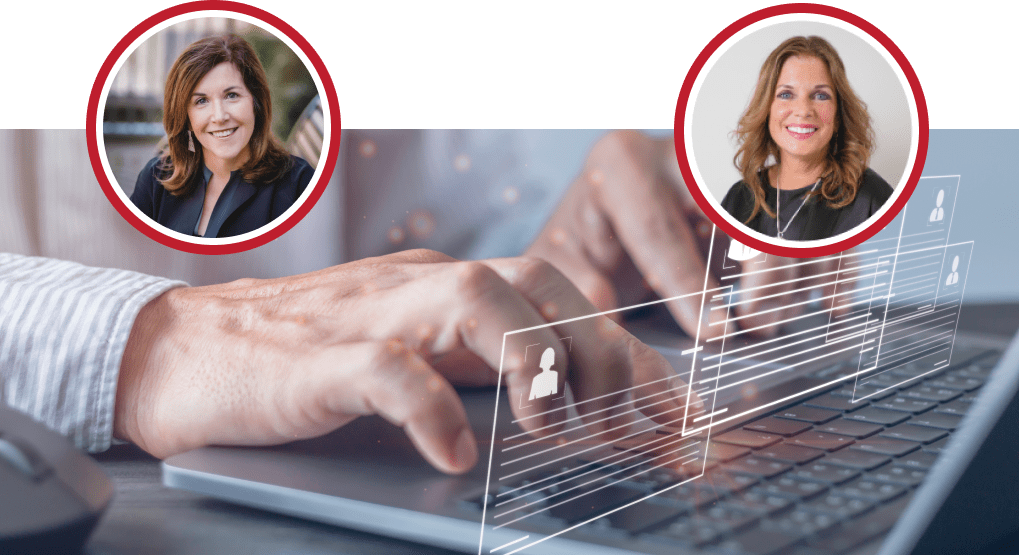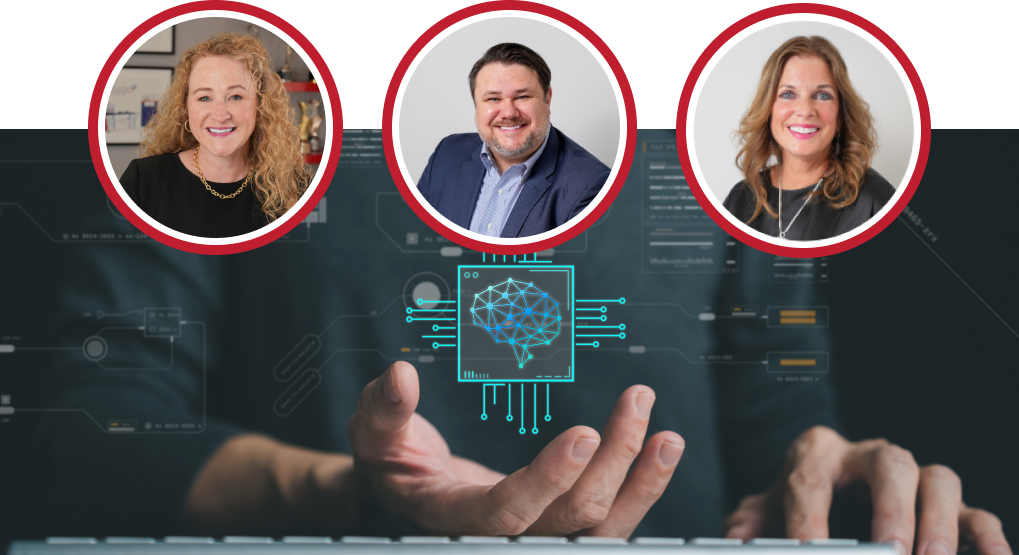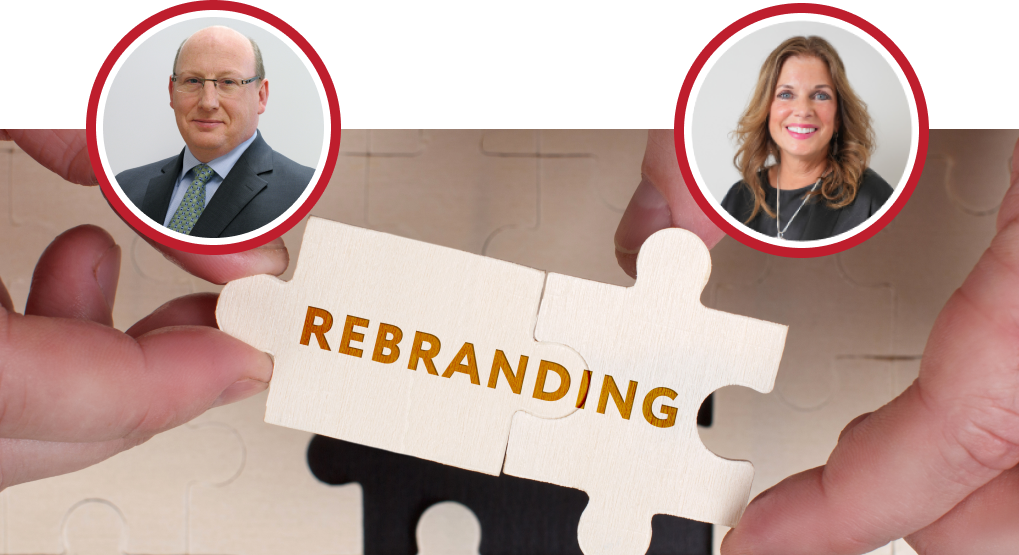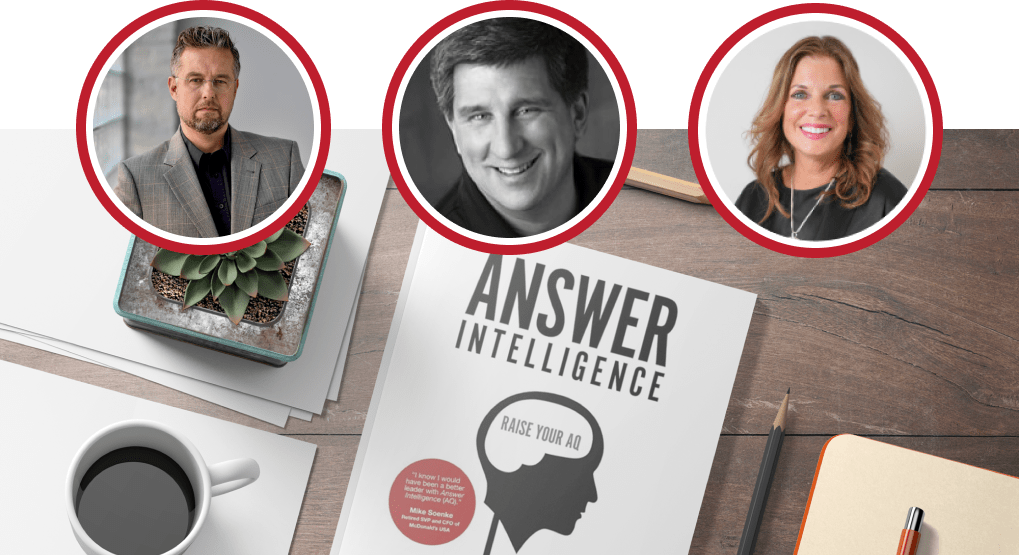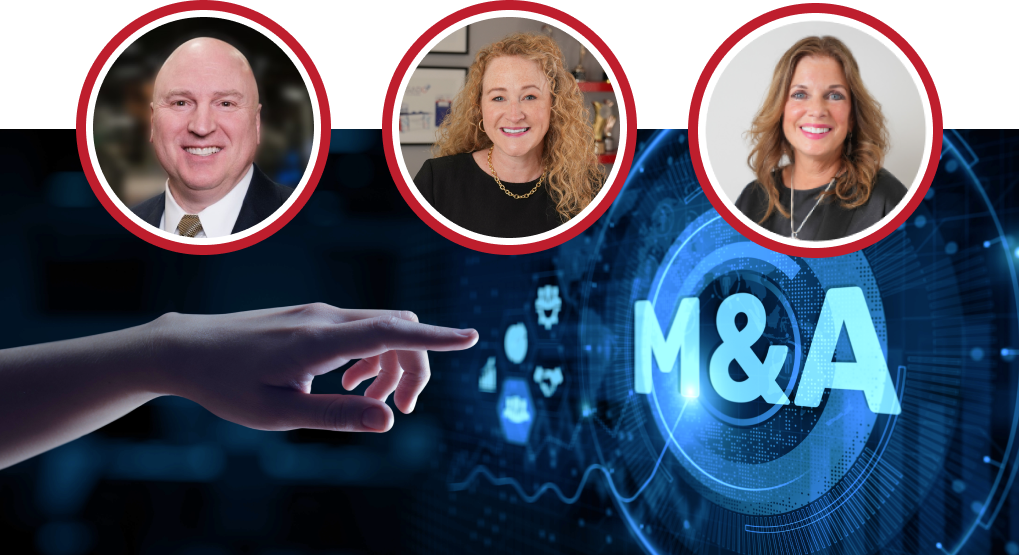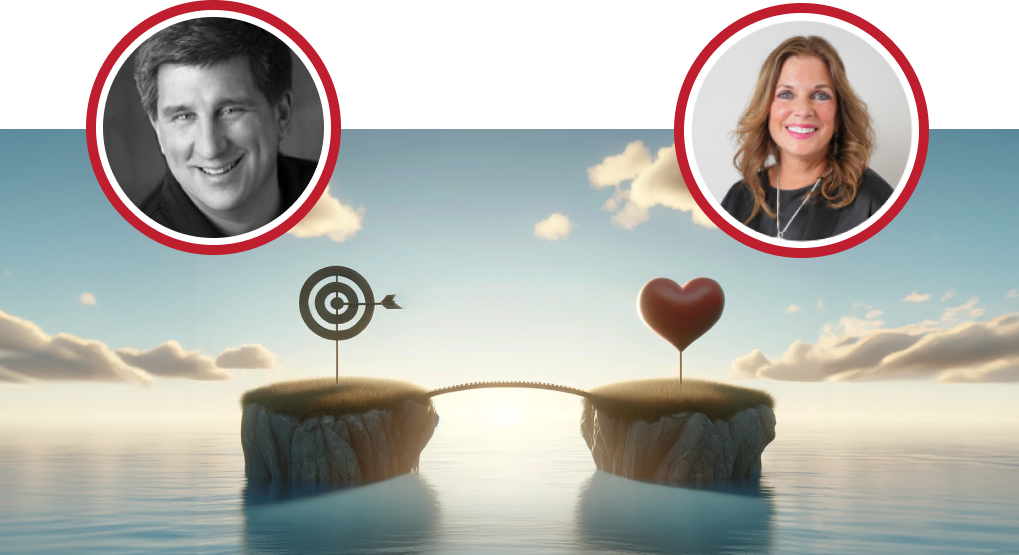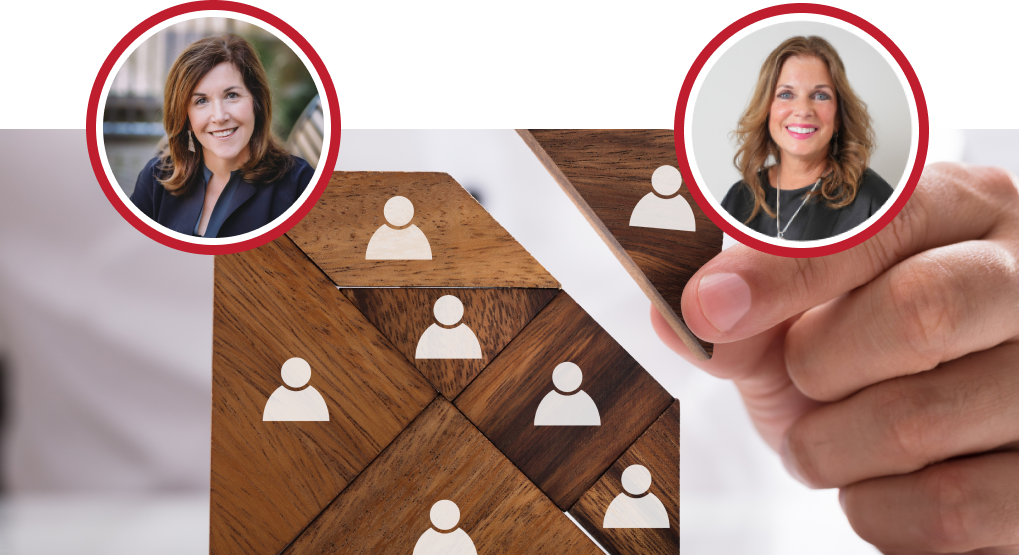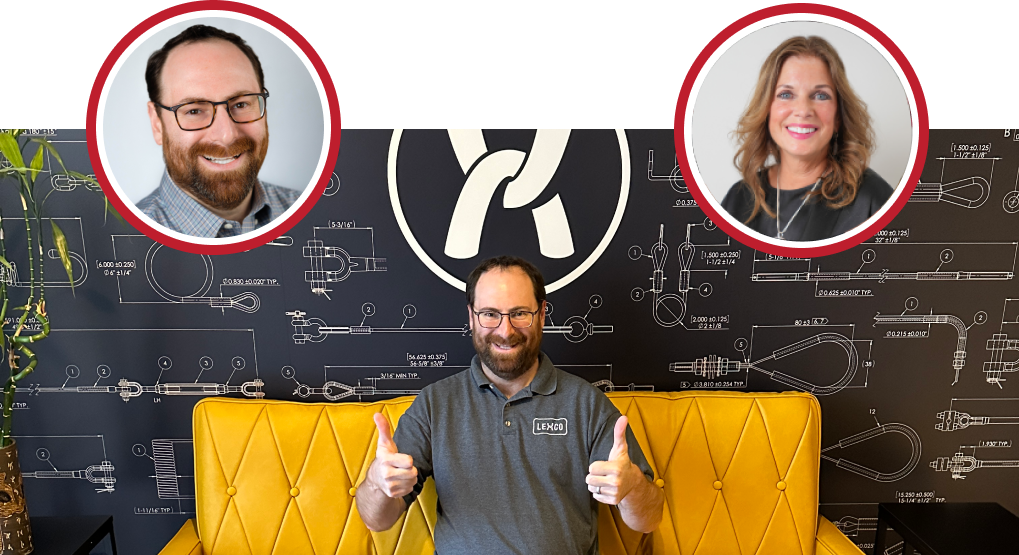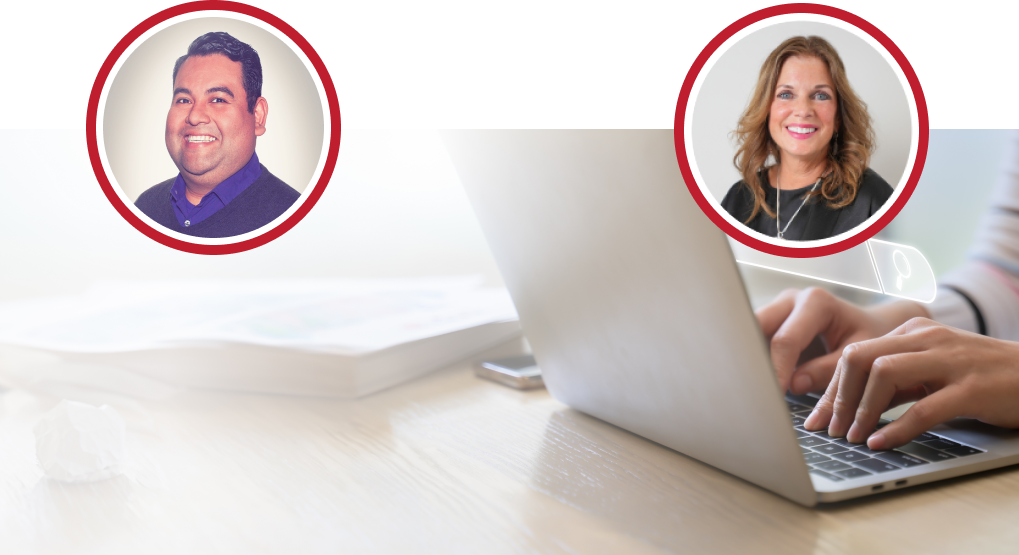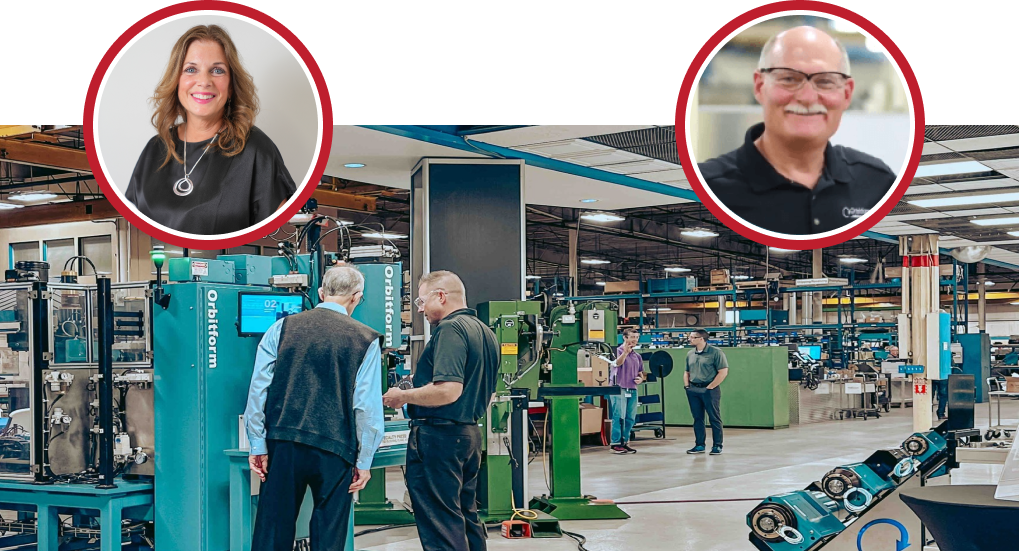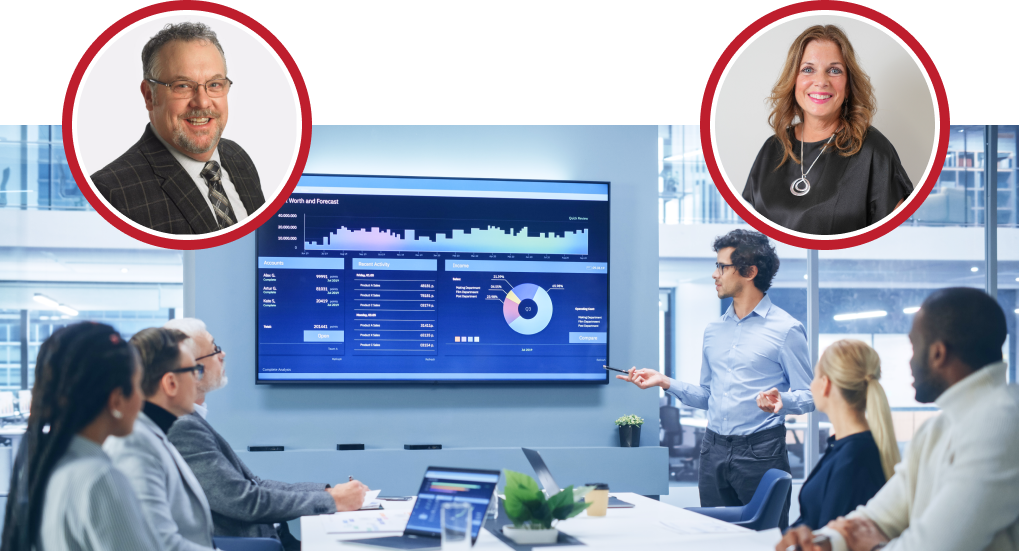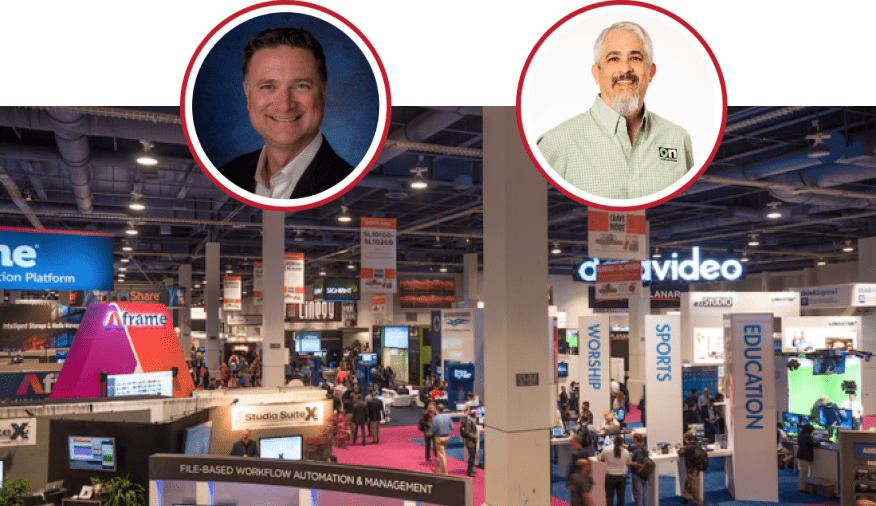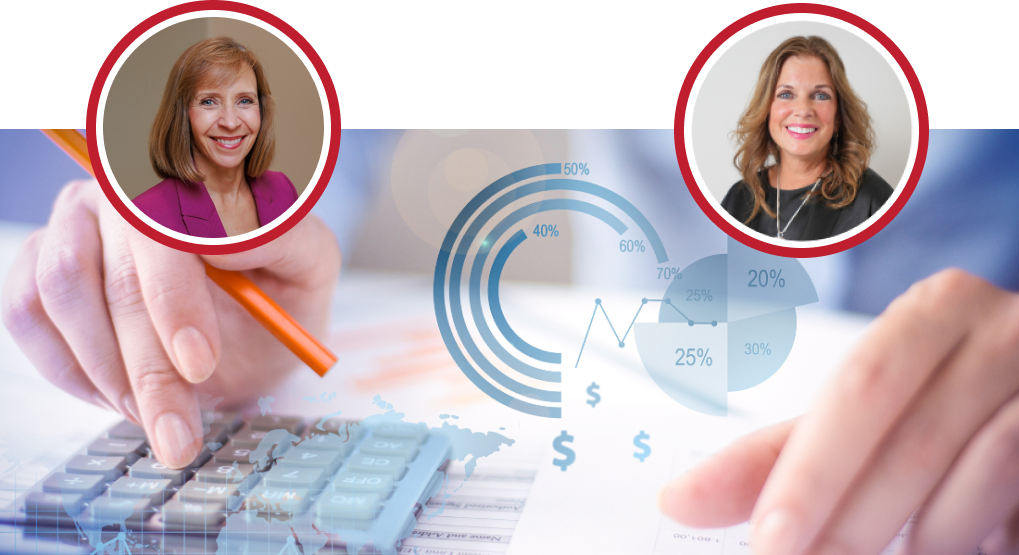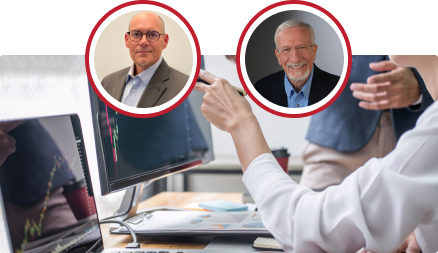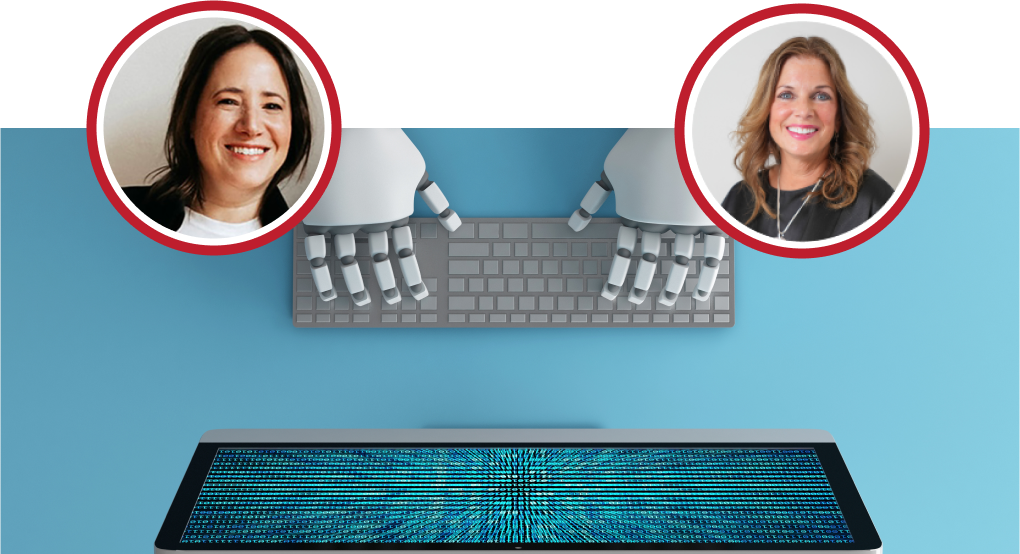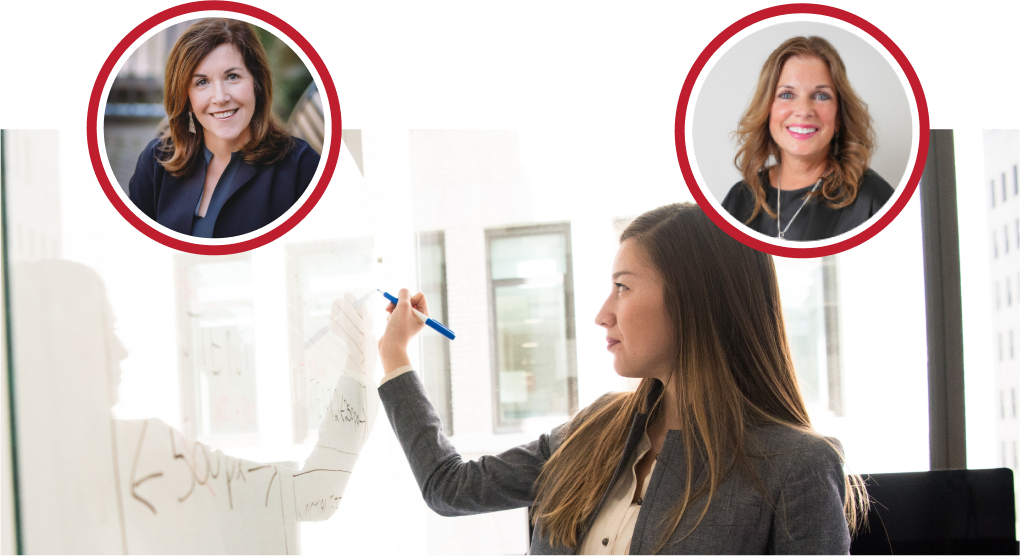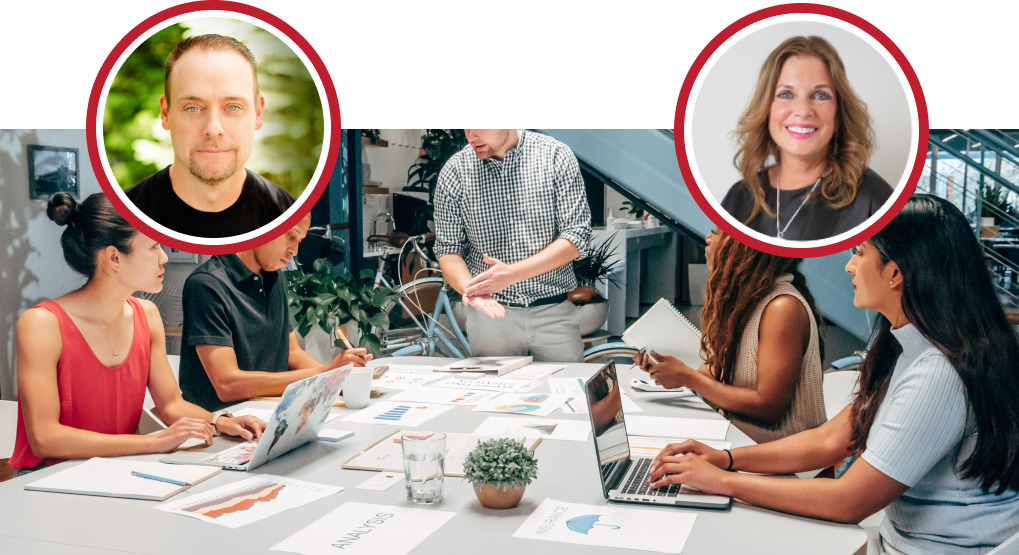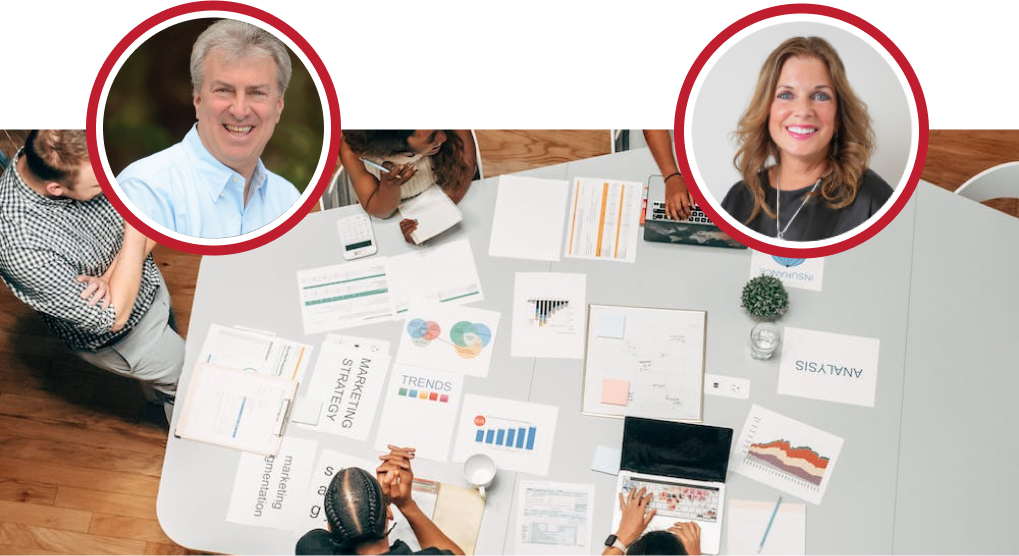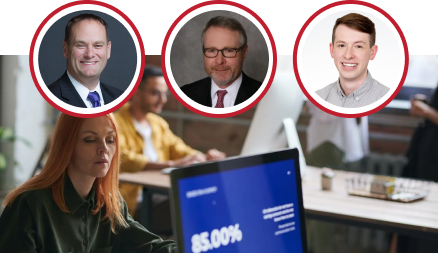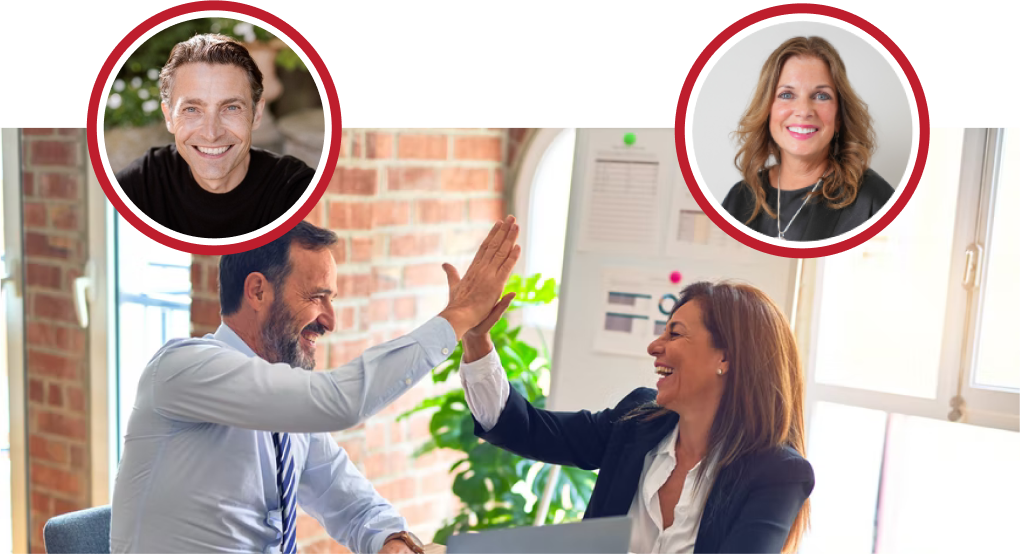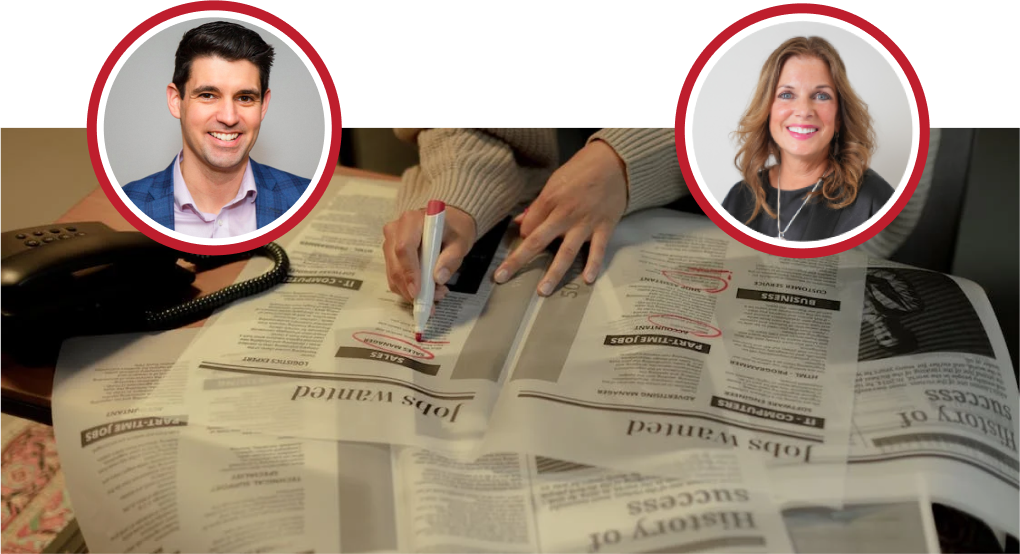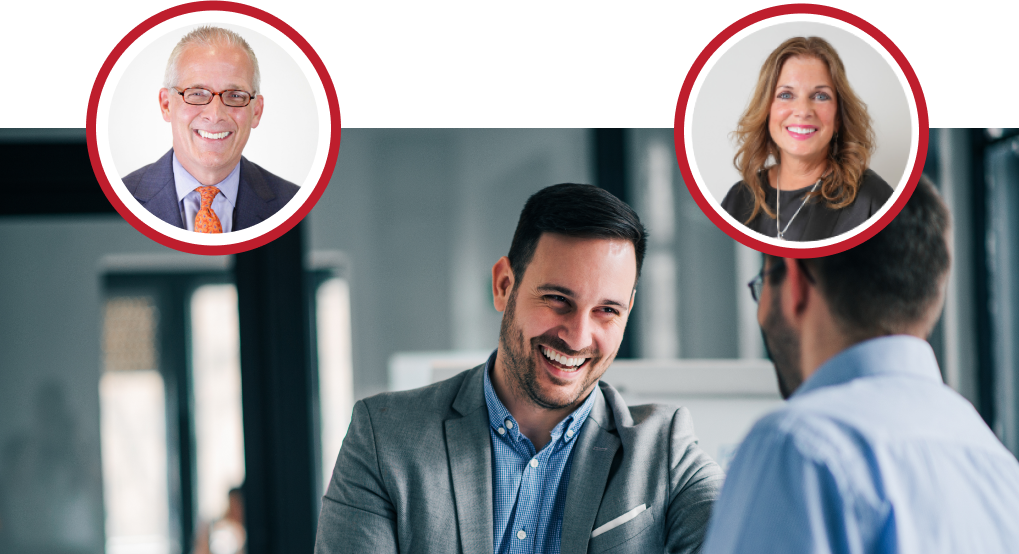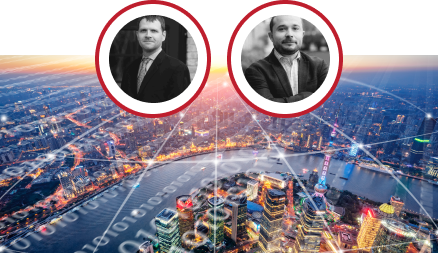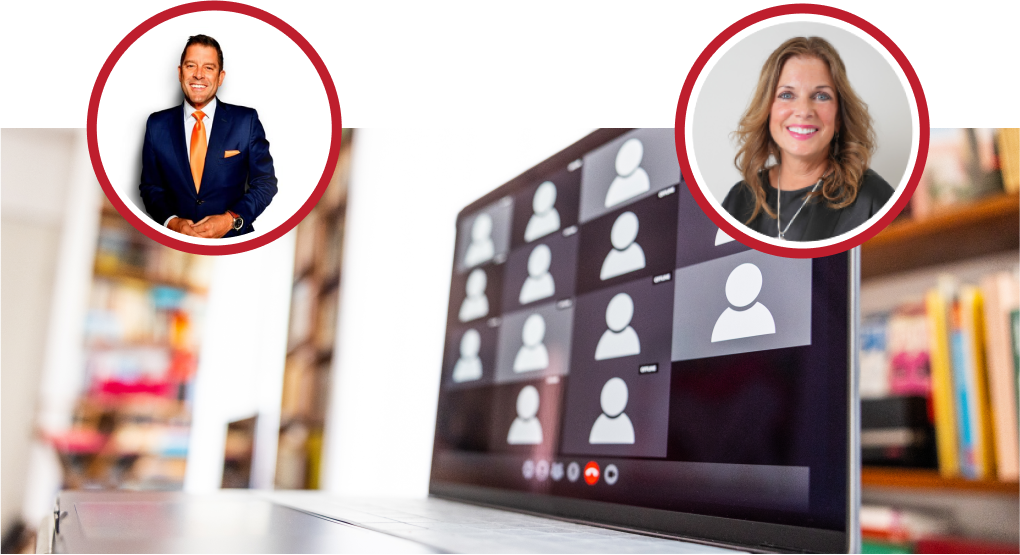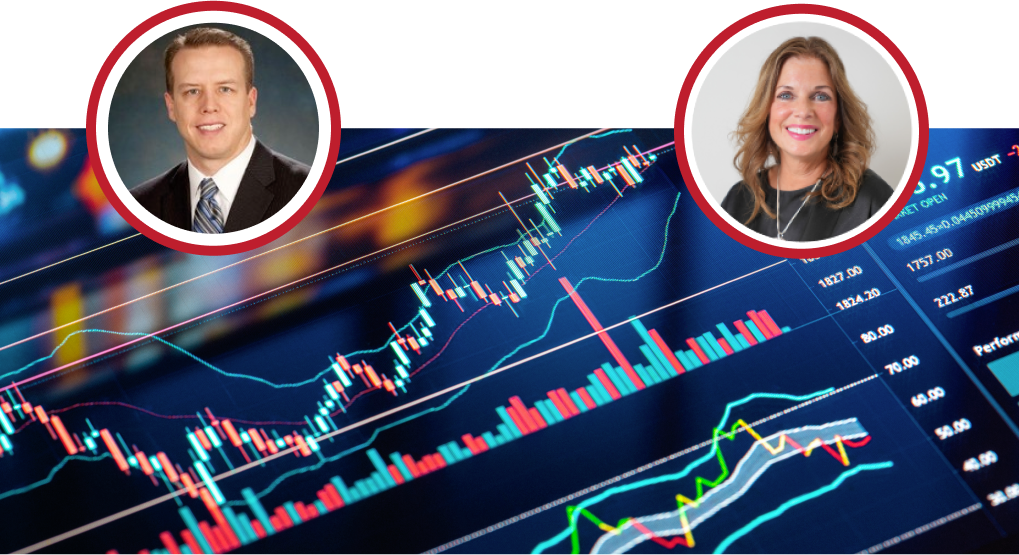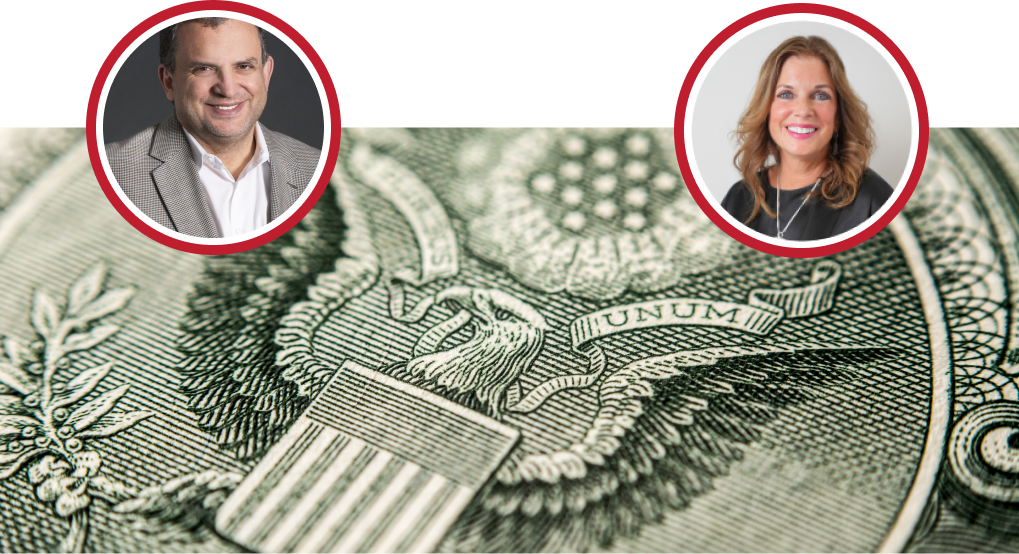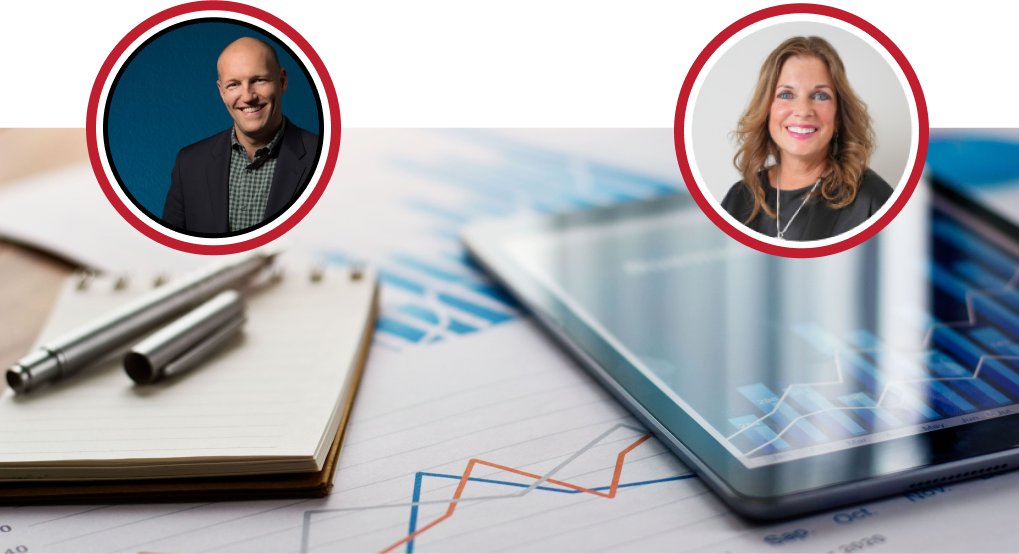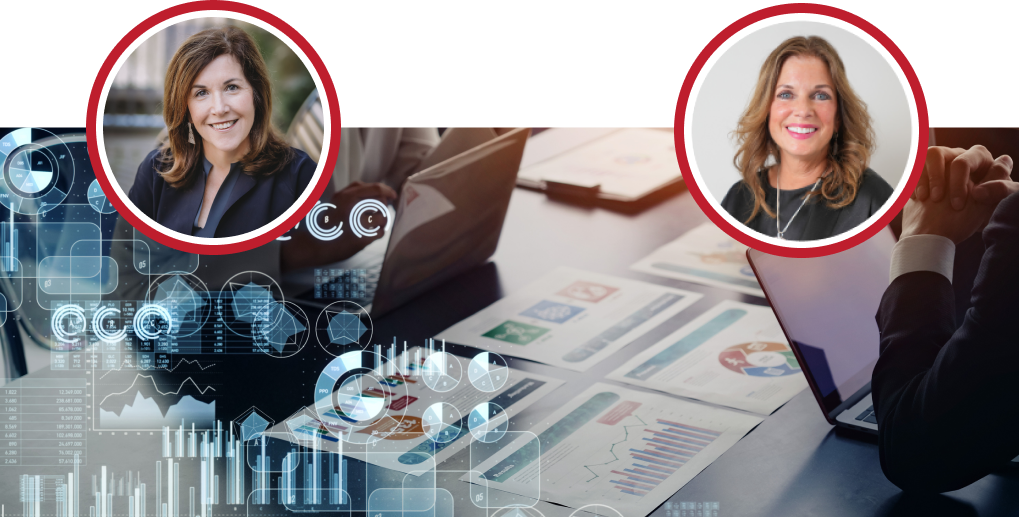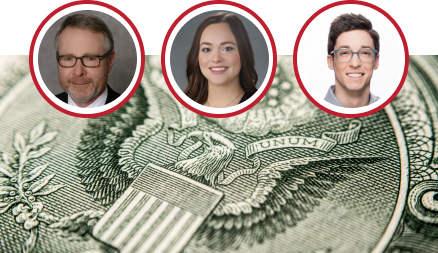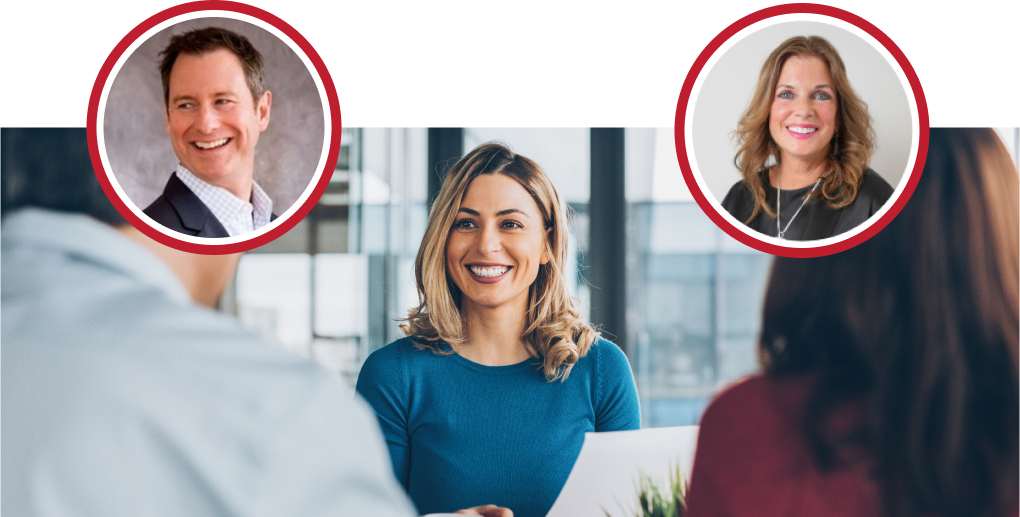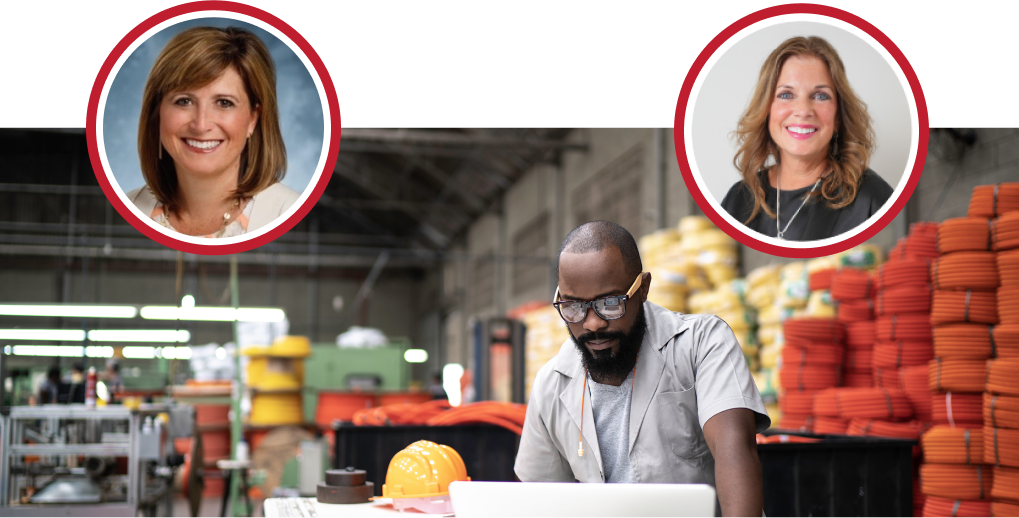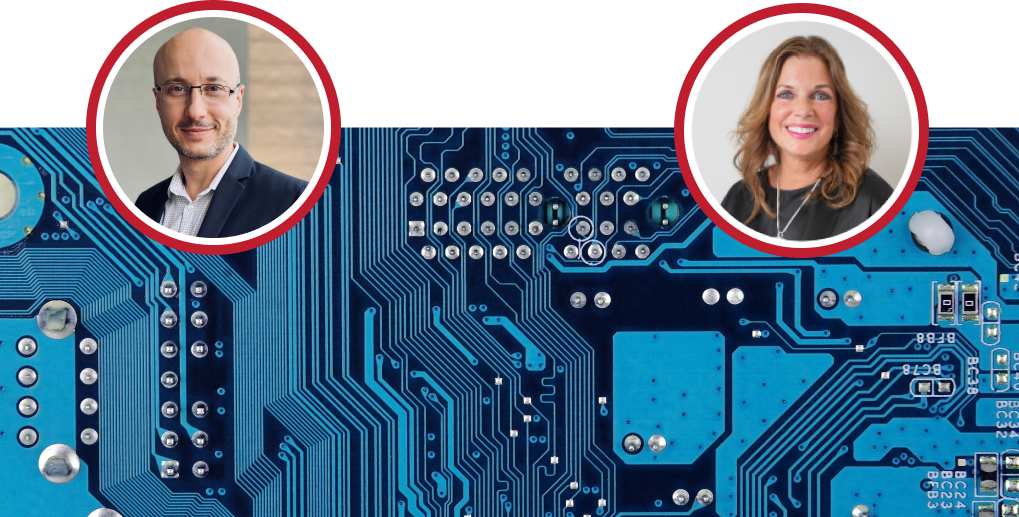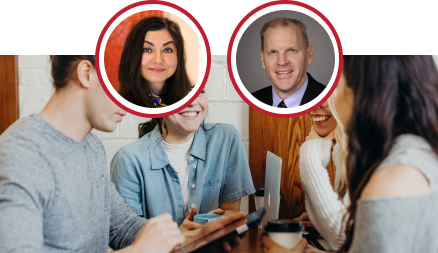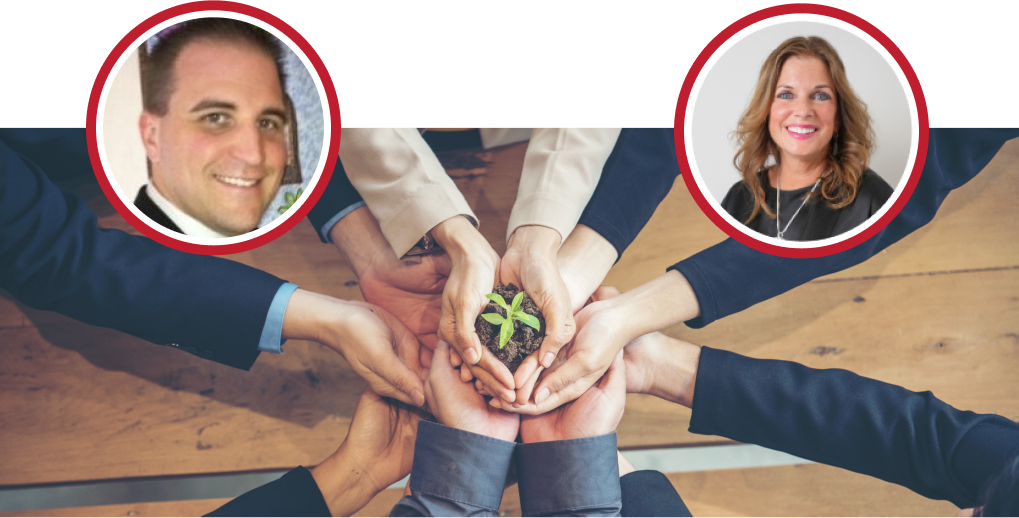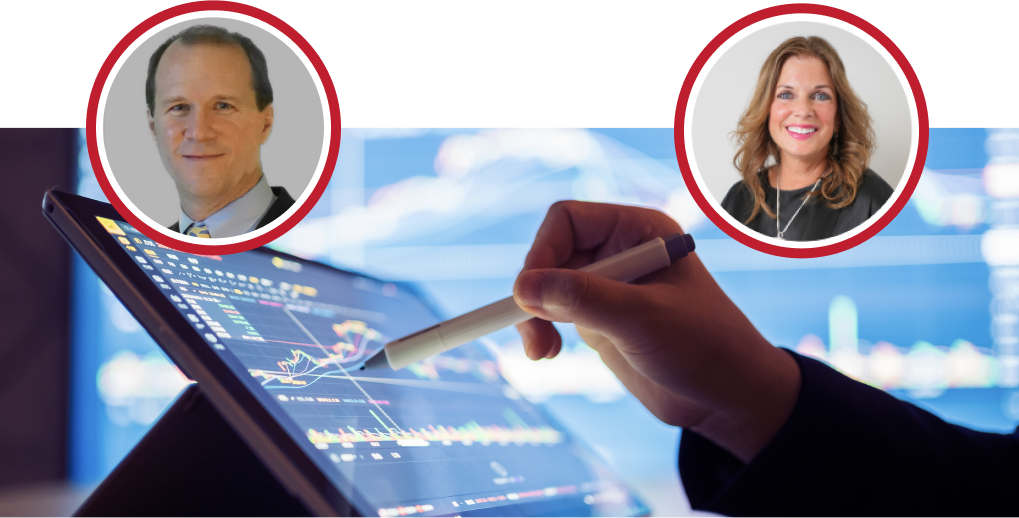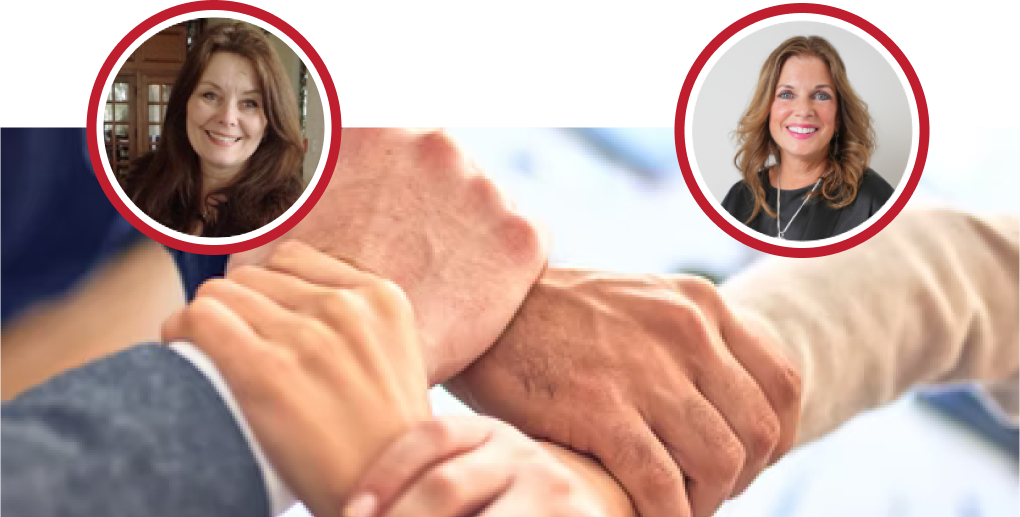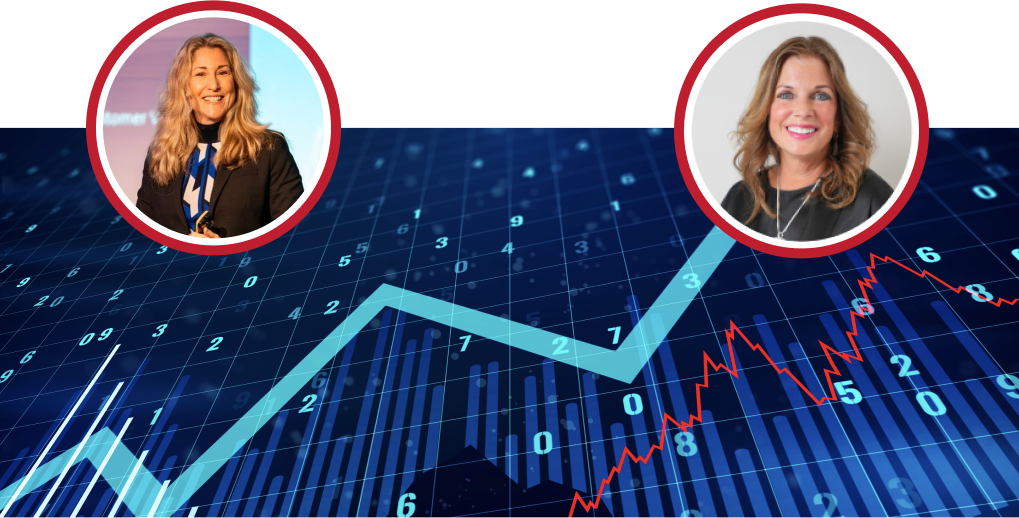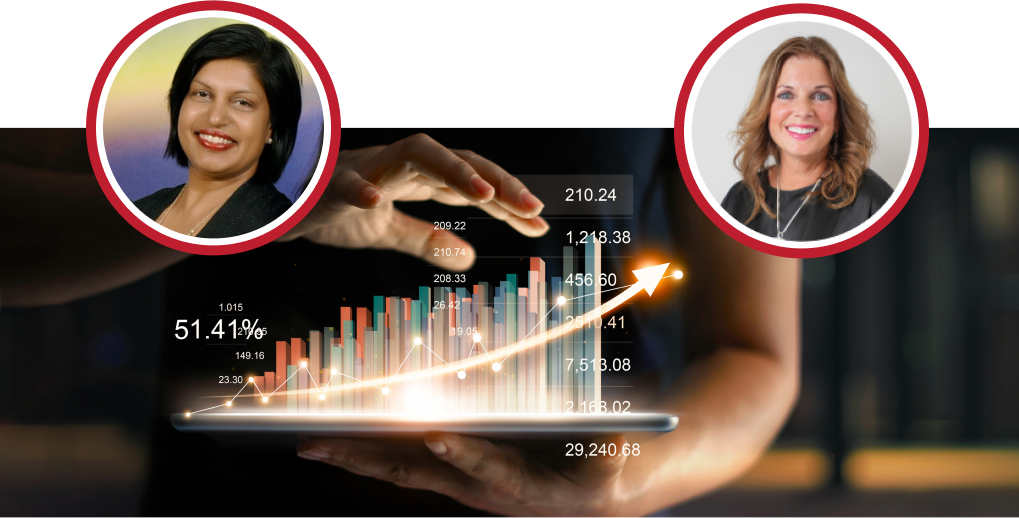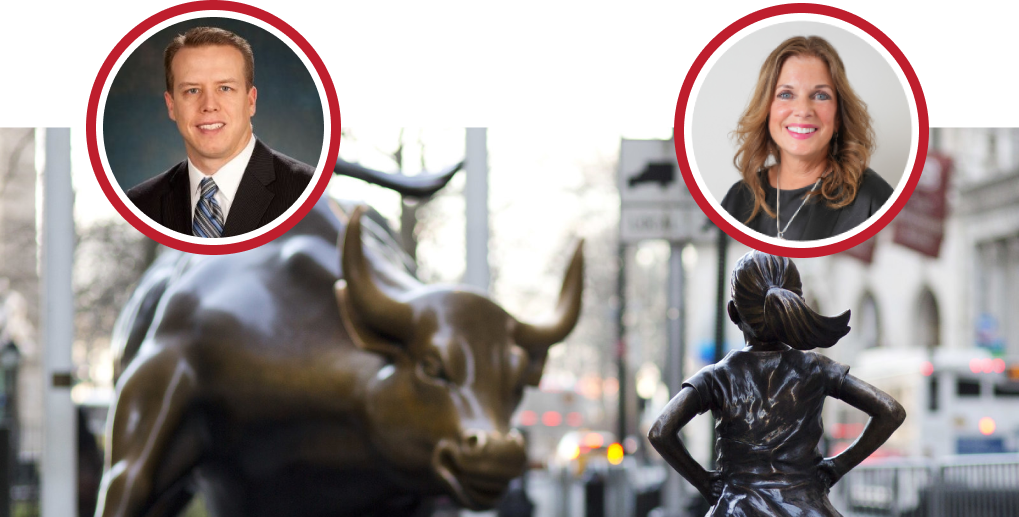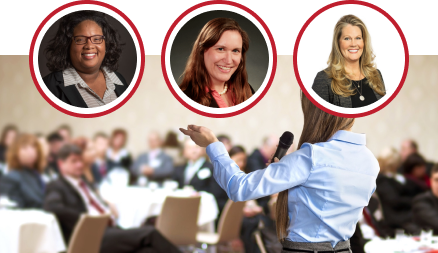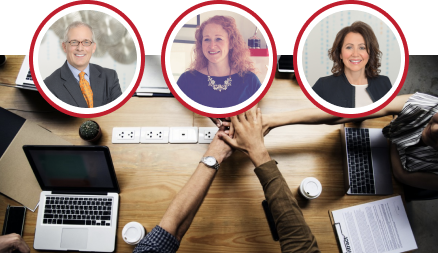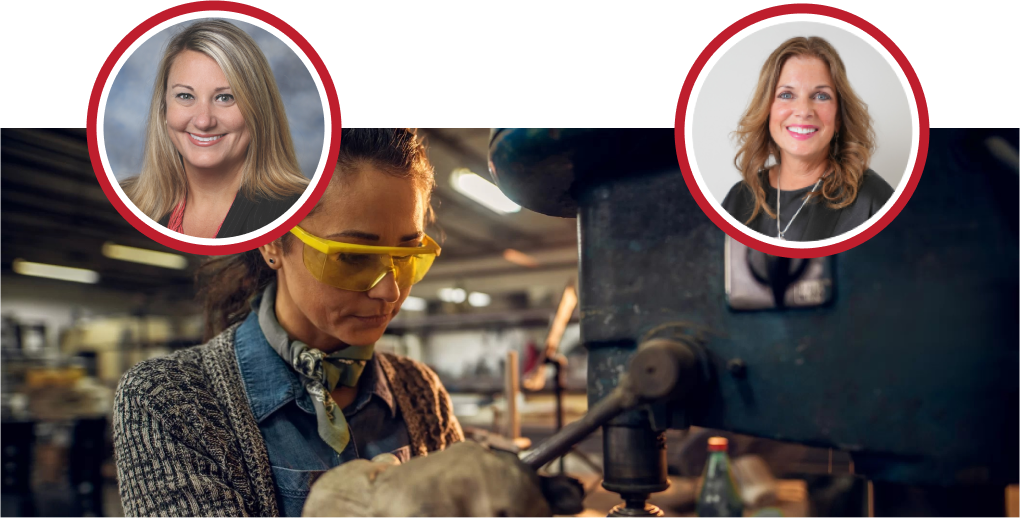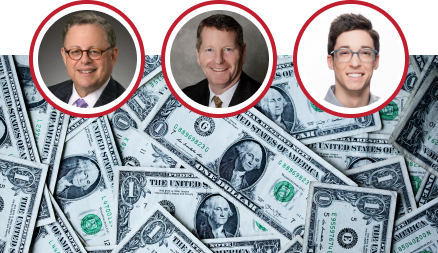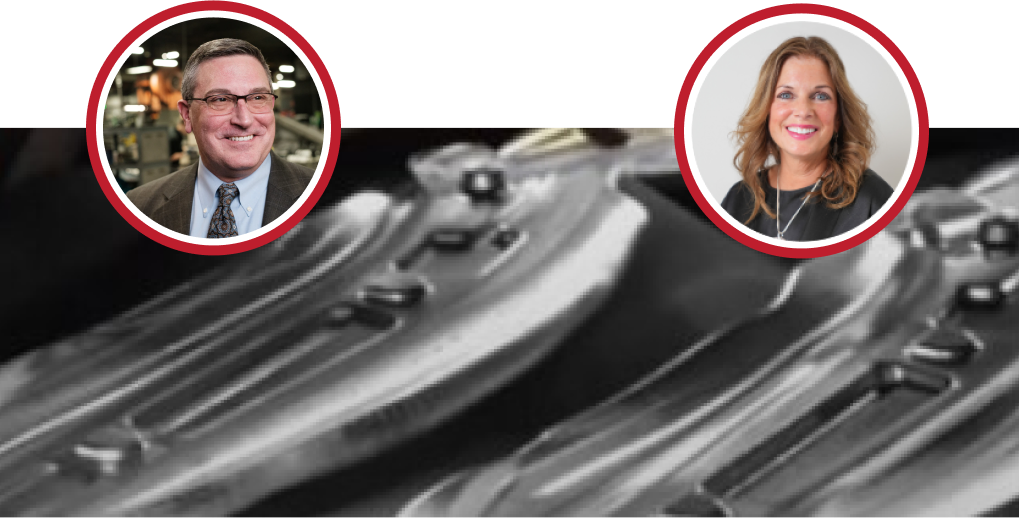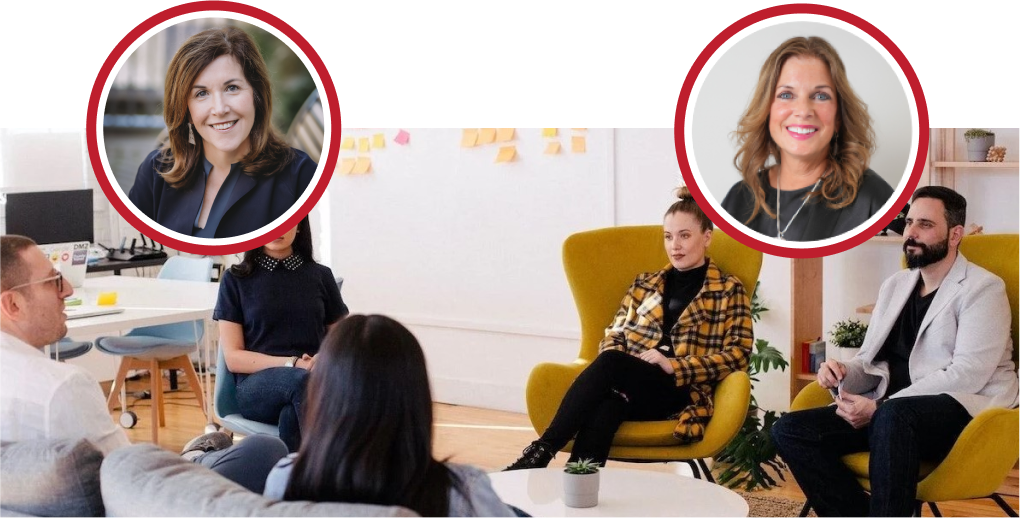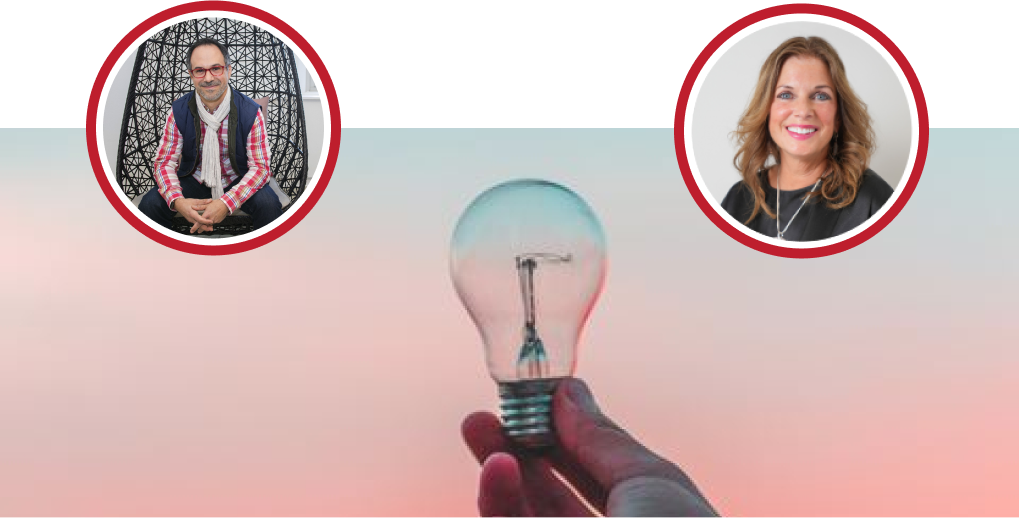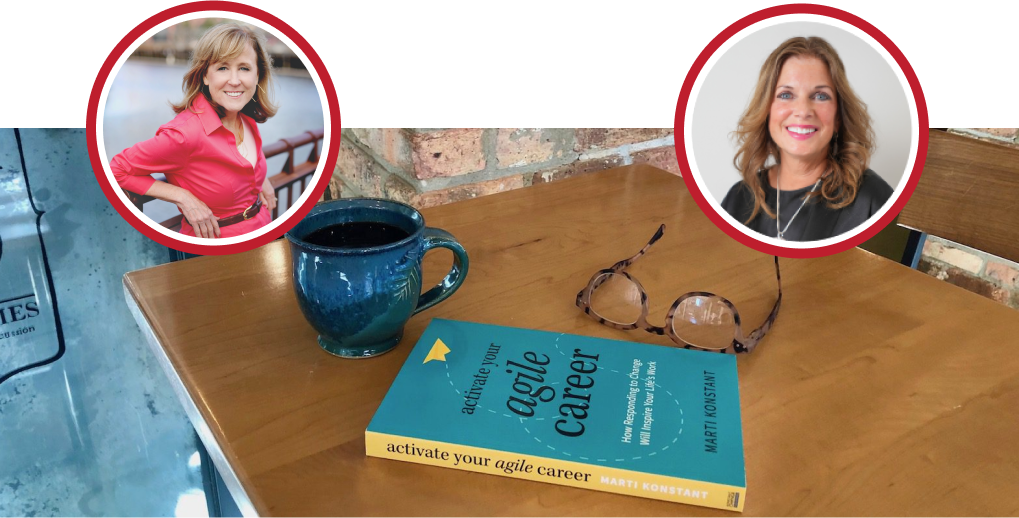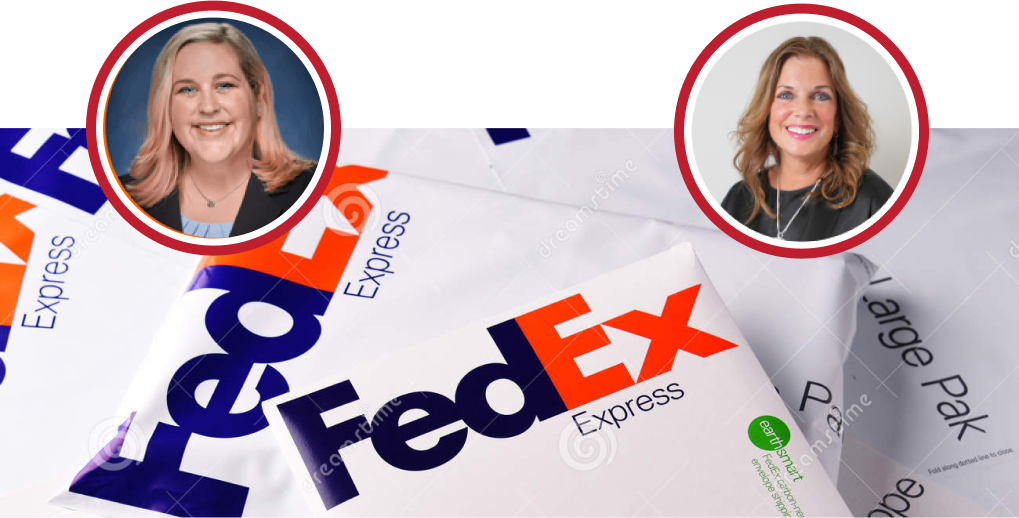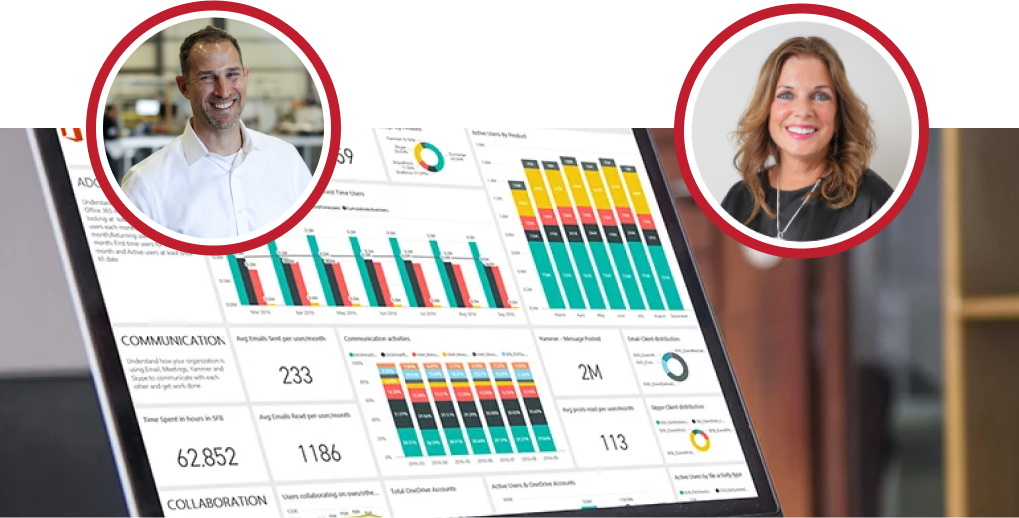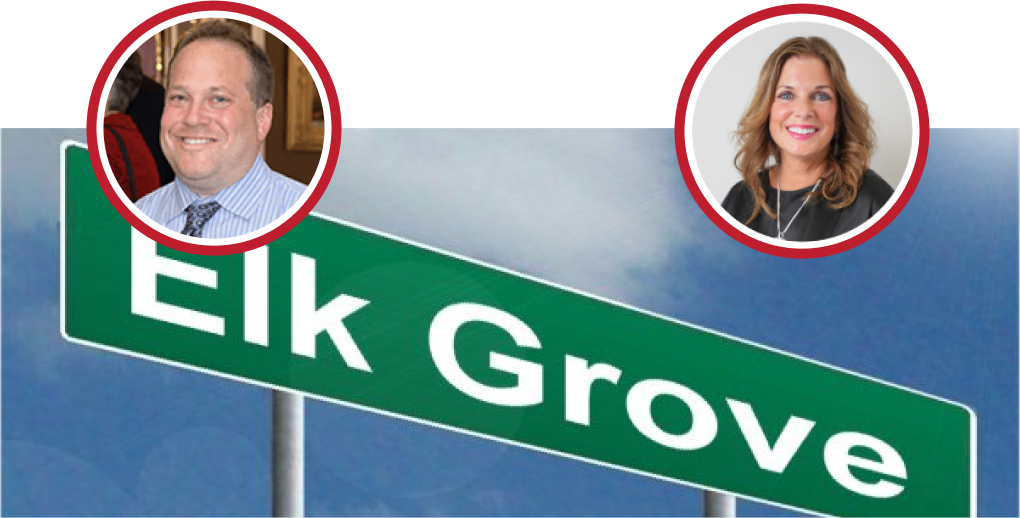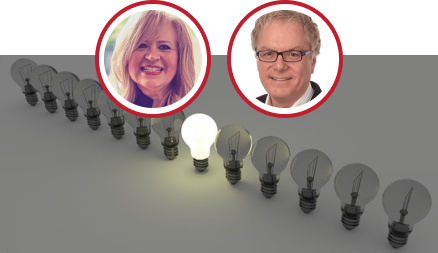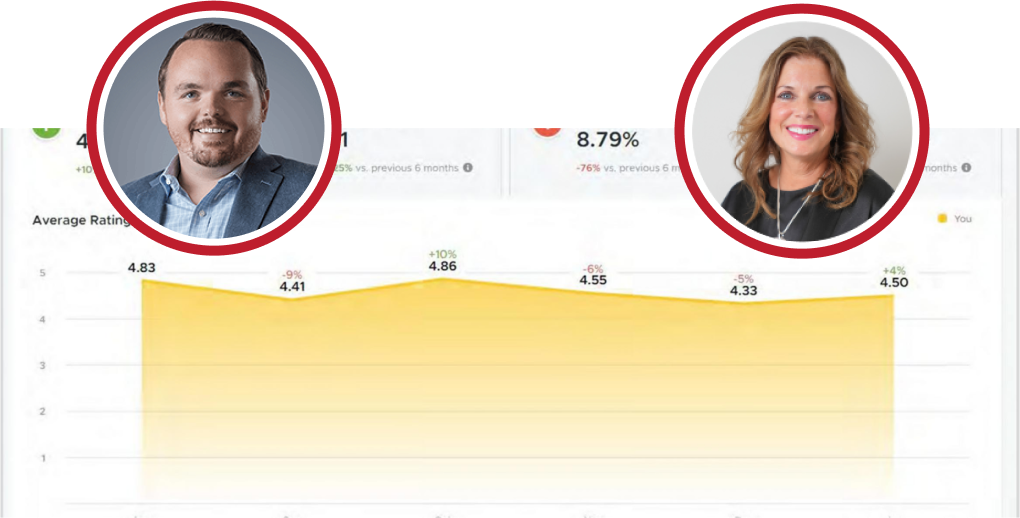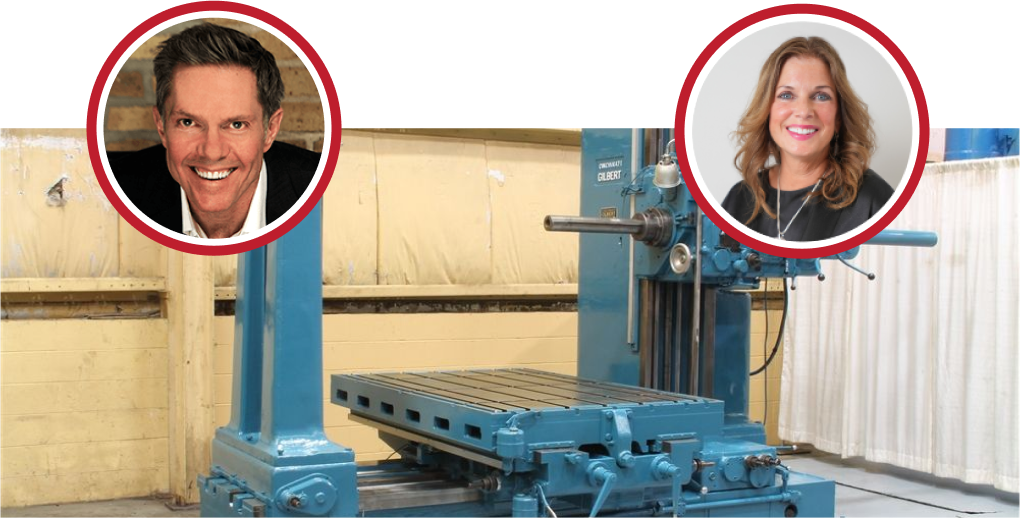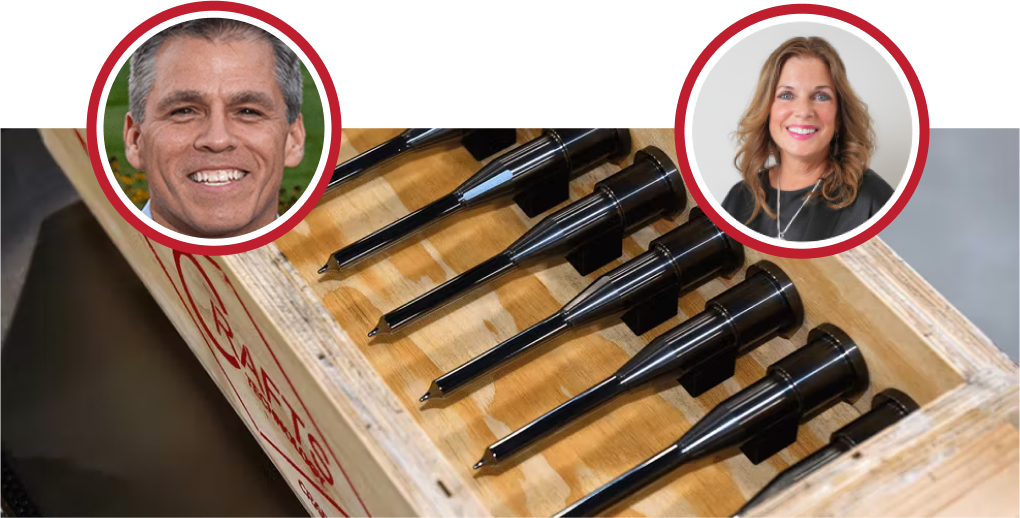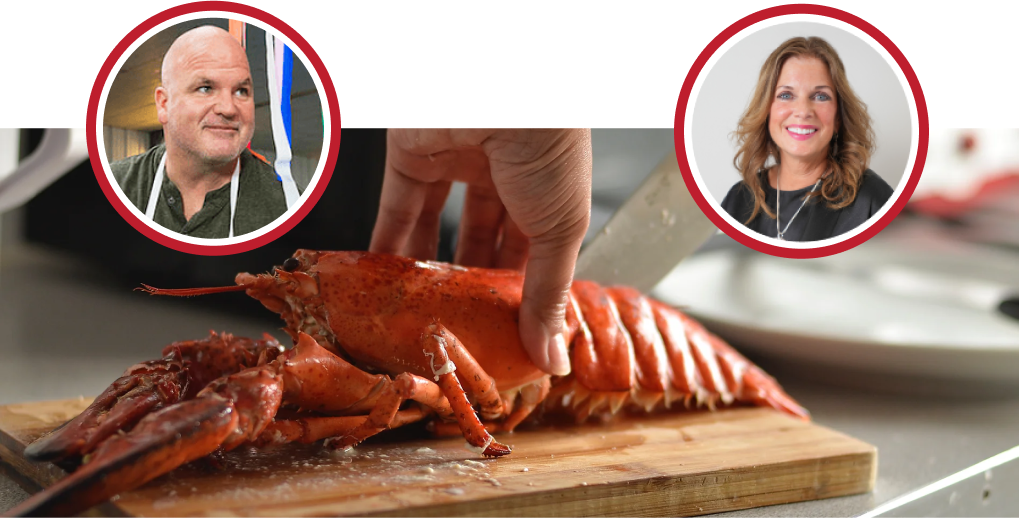Lisa: Official welcome to everyone to our One-year Anniversary of the “Business As Unusual” webinar series. It’s really excited that we’ve actually been able to bring great content to you over the past 12 months. My name is Lisa Behning, and I’m the Account Director at Red Caffeine. I’m joined today by Kathy Steele, Red Caffeine CEO, as well as Tiffani Bova, who is the Chief Growth Evangelist; I love that title at Salesforce, as well as the author of the Wall Street Journal; best-selling book “Growth IQ.” So, we’re going to be talking a little bit about that today as long as well as a special offer for everyone. So, with that just want to cover a few housekeeping items; as a webinar, we do have everyone on mute, so I highly encourage you to use the chat function or the QA option. I’ll be monitoring both throughout today’s session, and we’ll make sure that Kathy, and Tiffani, answer your questions either as we go or we’ll also have a QA period in the end as, well as I mentioned, we did have five restaurant winners today. So, make sure if you haven’t seen an email from Lisabehning@redcaffeine.com, go ahead and just check your inbox and make sure it’s in there. So, thank you to our winners; we always love supporting businesses, and two, if you’d like to be in the running for one of those gift cards in the future, make sure to register early for our next session, and you, too may be one of our winners. All right. So, with that, as we go ahead and get ready for today’s session. We all know that 2020 was quite the year; the landscape of business really did change, and so what we’re going to dive into today is how your selling strategy should actually change to keep up with that, and this is where Tiffani’s expertise comes in, and I know Kathy, and I are really excited to talk with her today and share all of her great knowledge ideas and information with you. So, with that, I’d like to go ahead and introduce Kathy Steele, CEO of Red Caffeine, as well as Tiffani Bova, Chief Growth Evangelist at Salesforce. So, welcome, ladies.
Kathy: Thank you, Lisa, and thanks for joining us, Tiffani. We’re really excited to have you. I have loved the book; I have bought it for a lot of our team as well as clients, and I love your podcast. So, we could go on and on, but I’d love you also just to kind of talk about your career journey just to kick us off, and we know some of the high points but tell us a little bit about how you got started before we dig in.
Tiffani: Well, first, thank you for having me. Welcome, everybody. Great to virtually see you. I have been in tech now for over 20, almost 25 years. I know I look 28, but I’ve been doing it for a minute; at least, I like to think I look 28. I don’t really think, you think, I look 28 anyway, and I started out selling technology, and then sort of throughout my career, I started to get more and more responsibility. I started running smaller sales teams and then larger sales teams, and then I ended up picking marketing, and then I ended up picking customer service. So, I had kind of all customer-facing groups, and my last selling role, if you will quote bearing, I ran a division of Gateway Computers, if you remember the cow pattern boxes, and then I spent ten years at Gartner, the world’s largest research and consulting firm for tech companies. I was a research fellow covering sales transformation go-to-market models, indirect strategies, and really kind of the impact of digital on the way brands sell market and serve customers, and now I’ve been here at Salesforce for five years just crossed five years. Feels like it was just yesterday; it’s been such an amazing opportunity for me and ride, but then 12 months ago, I got grounded after flying 375 000 miles in 2019; last year, I flew 55 or 60, and I got in kind of two days before all the borders closed from flights from Asia pacific. I was in Sydney. So, it’s been an interesting 14 months, but I’m super excited to be here to talk about future sales.
Kathy: Fantastic, well, let’s kind of kick it off by talking about the “Growth IQ” sort of the ten different growth lanes. We at Red Caffeine really identify with nine of them, but the love that one of yours is optimizing sales. So, Lisa, could you just cue up that one slide and just give us an overview of how different ways businesses can grow from your perspective until we really laser focus on optimizing sales?
Tiffani: Yeah, I’ll just give you a little bit of background on this image, and sort of, I’m on the ten growth path. I didn’t know there was going to be 10. I sort of said, I don’t know how do brands grow; it’s a very interesting industry the publishing and book industry, especially in business books it was done I want to write a sales book, and if any of you have been in bookstores you’ll know that sort of sales is sort of bottom-shelf back corner a little bit dusty four or five books and then like leadership management business strategy there’s like 300 books. So, I’m like, okay, do I want to be on that shelf? Or do I want to be on this shelf? So, I said, look, how do I reframe this conversation about top-line growth and not make it just about sales, and so I came up with “Growth IQ” to say growth is really a thinking game, and so I said, well do I want to recreate the wheel or do I just want to take proven strategies that have been used for well over 100 years we can talk about sort of that little tidbit of information but more than 100 years and say let me modernize the way companies have grown with the advent of social, mobile cloud big data AR, VR machine learning sort of all the new tech capabilities. So, none of these growth paths should be something that you go, wow, I never thought of that it should be hmm, I’ve seen these before. So, what am I going to learn new, and that’s really, where I spent the time is sort of how and where and why you would use these particular growth paths to either recover from a growth stall if you were not growing over the last couple of quarters mind you this was pre-pandemic, but I’d say there’s almost nothing I would change in the book knowing what I know now over the last 14 months people ask would you change something I might change some of the stories, but I wouldn’t change the construct, so this is sort of the ten that we came up with and one of them obviously was optimizing the way in which you sell.
Kathy: Yeah, I mean, I related to it so well. I know you’re talking about most big brands, but I saw many scenarios where we’re seeing that same thing play out in the mid-market in their growth strategy. So, it was super relatable regardless of some of the brands that were identified. So, let’s talk about sales. So, it has been a game-changing year for sales. So, let’s kind of flip gears, and to take us back kind of sort of pre-pandemic and through last year and then kind of talk about where we are now?
Tiffani: Yeah, I’m gonna oversimplify, and for those of you listening just if you’ve never heard me speak that I sort of tongue-in-cheek will sort of play with some legacy concepts, but here’s one I love to say is businesses do two things they do a lot of things but two very specific things they make stuff, and they sell stuff that’s kind of it so whether you make it yourself and manufacture yourself or you’re reselling for someone else, I think you get the concept right the goal is that you need to earn revenue which means you have to sell something now you can say lots of things right it’s about serving customers and solving business problems and yes but at the end of the day it’s about selling something and so how do you reframe that conversation and saying that not everybody who has a sales title or is carrying a quota has an impact on the way in which your brand is able to grow and whether you’re a small business medium or enterprise. I wouldn’t change the conversation, but what I would say is what I have seen over the 15 years. I was running sales organizations, and the ten years, I was advising startups and the largest sales organization in the world and really helped build go-to markets for probably the largest tech companies in the world. At this point, I can tell you that I used to get asked this question I’m trying to sell more like, it’s a little slow, and the funnel the pipeline is stalling what should I be doing, and I used to always hear these three things one let’s spend more marketing dollars to drop more into the funnel two let’s hire more salespeople because more heads will equal more revenue or three falsely cut costs to gain sort of profit and I knew that there had to be more than that and when I dug into the sort of the complication in the selling motion I realized that optimizing the way companies sell is the place that they should focus versus those three I used to consistently hear. So, that kind of led me to this optimized sales sort of chapter or path.
Kathy: Yeah, so in terms of that aspect, what is what has really transpired in the last year? How have you seen businesses start to transform their selling strategies? We talk a little bit about the Fourth Industrial Revolution, but what about post-pandemic or what have you seen gone on go on during the pandemic?
Tiffani: Yeah, so, I’d say pre-pandemic; I coined this term the seller’s dilemma, and the “Seller’s Dilemma” was a play on Clayton Christensen’s innovator’s dilemma. If you haven’t read the book, it’s a fantastic book. Clay is masterful, unfortunately he passed away last year or maybe a year and a half ago now, but the “Seller’s Dilemma” was all about how do sales leaders hit numbers today while transforming and preparing for tomorrow that’s a hard sort of argument I have to hit my numbers because if I don’t hit my numbers I’m not going to have my job but if I don’t transform, and we’re not prepared I won’t have my job and so it’s sort of this conflict of where should I spend my time and my focus and unfortunately most sales leaders get trapped in the day-to-day trying to hit numbers, and they don’t spend enough time on the transformation and so what I mean by transformation is do you really need more sellers or could you use technology to help you do it do you need different kinds of sellers should you be partnering more to give you more coverage and scale versus just hiring your own resources like those kinds of questions or selling via social media and selling via automation and maybe machine learning and AI there are so many things that can happen there that’s sort of pre-pandemic boom overnight field sellers are now inside sellers and overnight if you weren’t a mobile digital first driven sales organization you found yourself in trouble so the lack of investments that had been made pre-pandemic really sort of reared their ugly heads right companies weren’t prepared sales teams weren’t prepared they didn’t have access to customers or information or the ability to let sellers continue to sell from anywhere you had field sellers who for all intent and purposes believe that the only way they can sell is face to face like it didn’t matter how much I would tell a field seller look you need to balance this a little bit you don’t always need to be face to be like oh no I have to shake their hand take them to golf take them to dinner meet them an event take them to a concert like all of those things and like I don’t think you need to do that anymore but overnight they learned right that they had to be able to do it virtually now Mackenzie had done some really fascinating research looking at what customers thought about the sort of active selling and the active buying kind of April time frame, and we were upside down customers weren’t happy because I think sales organizations were scrambling to figure out how do I? How do I keep selling when people are shut down? And like the world, it doesn’t know what’s going to happen. You can’t be insensitive and be like, I need to close this deal like that’s not the right conversation by the time we got to about June; we got better by the time we got to almost august September what had happened is sales really stepped up they stepped up in a way that customers actually felt like it was a better and stronger relationship with their selling vendors then they had pre-pandemic they felt like it was a 15-minute video call better than a two-hour meeting right it was very focused and value-based sellers were more empathetic right they were more interested in the business versus just closing deals. So, the good news is sales rallied, right we’re a strong bunch like we’re very competitive we have to have thick skin and sort of before down. We got to stand up, dust ourselves off, and kind of keep going, and it was great to see the resiliency. So, I’d say now the question is will we continue to do it post-pandemic, or will we go back to those bad habits I hope that we fall somewhere in between.
Kathy: Yeah, I mean, I don’t; I love some of your philosophy on social distancing and not really calling, saying that because I do feel like we were constantly encouraging clients and prospects to digitize at least a portion of their sales strategy and use digital channels and digital tactics to reach customers in a very meaningful, and the one-to-one way without being face to face, but I think that striking that balance of seeing people. I’m definitely missing people, and I do feel like we’ll see some return to that, but there’s been a lot of efficiency gain in using digital tactics and technologies, and I think many of our clients are reaping the benefits of just embracing that, but it felt like forever to get people to sort of over oh my customers aren’t on social media oh, we don’t need a CRM I mean, we just, we heard that over and over and over again and until they did.
Tiffani: Yeah, exactly still they did, and I would, and I would say this look the other thing on the flip side of this the negative side of everything I just said of all the positive and the resiliency, and really stepping up for customers is that sellers are feeling burnt out, and so we’ve definitely seen a lot more around that, and I started surveying and asking the question kind of the May, June time frame like are you feeling burnt out, and others are had also obviously been doing research around that, and the challenge here is that sales carry the weight of the revenue for a company if you’re a small business you have two or three sales people like they’re responsible for keeping the lights on the right and if they are just like I gotta keep working because I’m feeling the pressure I need to answer my customer’s emails regardless of time or day I need to be available all the time it gets really tough. So, I would say to the leaders that are listening to this, you have to make sure you’re providing the permission and space for your people to take the time they need so they can recharge and reflect and think and show up with their best selves and I don’t mean that to sound woo-woo right, but their best selves mean that it cannot be about just productivity metrics it can’t just be about how much was added to the pipe today that that is insensitive to the fact that there are lots of things going on potentially at people’s homes that we don’t know about, and we need to make sure that we’re careful in not burning out our people.
Kathy: Yeah, no, I couldn’t agree more, and just spending so much time on Zoom meetings, you wouldn’t think sitting in a chair all day would be exhausting, but it certainly takes its toll on you. I’m curious about the buzzword sales enablement and what some of those things that you see businesses doing moving from that more analog selling practice to a more digital-first practice. What were some of the things that, from simple to more innovative, are?
Tiffani: Yeah, I’d say this, I sort of a couple of years ago now, it’s probably been seven or eight, I stopped using just the term sales enablement because I felt like there’s a couple of reasons one I think that enablement should not be just reserved for sales you have customer service or customer success that also needs to be enabled in a similar way as sales, remember customer service or customer success whichever you may call it is has the opportunity to upsell and cross-sell and save customers that are churning out and so enabling them as well. So, I started calling it kind of growth enablement right to really capture all the things that happen around growing the business sales is one of them right saving customers and solving their problems is another, and it could be products or whatever but let’s just focus on sales and customer service, so is marketing or whoever is responsible for sales enablement only doing sales enablement to sellers and ignoring customer service that’s such a miss which that’s another one of my growth paths which is customer base penetration which at the beginning of the pandemic I said this is the year of the existing customer and not the net new customer because it was about taking care of those customers you are making sure they’re okay, and are there things you could be doing to help them be more successful during this time so from an enablement standpoint that is training that is tools that is technology that is insights real-time coaching it’s all kinds of things, but it has to be sort of self-driven and so making sure that you are enabling your sellers to be responsive to customers today is very different than it was 14 months ago your customers are now super consumers who have a very digital first expectation because of everything they do in their personal lives now from home and so those expectations are dragging themselves over into the B2B side. So, if you sell B2B, this is the consumer expectation plus, and if you’re selling B2C, that has also really changed. So, we have to make sure we’re enabling our sellers and those that are touching customers in ways that drive a good experience as well as open the door for additional revenue and services.
Kathy: Yeah, I couldn’t agree more, and I do feel like those organizations that did really focus on their current customers last year did reap the benefits of just building on those relationships that were already existing. So, what are some of the ways that you shorten the gap between what your prospects want and what your teams can deliver?
Tiffani: Yeah, so, there’s something I’ve been saying on this for a while, and that is that the sales process and the buyer journey are not the same things, okay, the buyer journey is fluid; it is not linear; it might go forward and backward they may do a lot of research before they ever reach out they may reach out and then back up and say maybe it’s not the right time they may move really quickly through the process, but that is their buyer journey fluid the sales process is rigid linear stage one two three foursome companies have like nine stages, which I don’t really know why but a lot of that has to do with productivity metrics and tightening what’s happening and, which is all the wrong reasons. So, customers do not wake up and go I am so excited today is the day I’m gonna go from stage two to stage three in the sales process whoa I can’t wait I wish though not what they say, and sales people don’t wake up every day and say I can’t wait today to enter so those two things I know for sure but the sales process and the buyer journey are not the same so when you think about the buyer journey, and I’m just going to give you an example for those of you listening if you’re a manager or an individual contributor how many times in the sales process let’s say in your CRM system have you taken a deal backwards, so maybe you were in stage three and then the customer is sort of like I need to hold off for a bit, and now you’re going to take the deal back to stage one and when I ask that question in a room full of sellers how many of you have moved to deal backwards nobody’s hands go up it’s like that’s fascinating the sales process is miraculously goes one two three four right and the customer’s like totally crazy on it like they’re back and forth and so the reason they don’t go backwards is because they may hold a deal in stage two until they know for sure it’s going to go to stage four, and then they do it all at once because they don’t want to take the deal backwards but what that does is it gives a false positive to marketing that wow everything’s working the way it’s supposed to and leadership is like wow they were able to just get it over the hump so quickly instead of identifying wire deals going backwards why are people pausing at this stage but if you’re not letting sellers take it backwards and one of the main reasons is when you ask a salesperson what happens if you take a deal backwards they’re like it’s not even five minutes my phone rings like my manager’s like what the heck happened to the deal why is it going backwards it’s not rewarded it’s penalized so when I say sellers don’t take deals backwards it’s a response to productivity metrics and KPIs and the fact that wire deals going backwards that’s not what we’re paying you to do right and that’s not reality I mean really how many of your deals just smoothly went from stage one to Five those are low-hanging fruit that doesn’t happen all the time normally it’s far more complicated unless you’re selling a commoditized product, so I would say that understanding the sales process is different from the buyer journey then organizing and enabling along the way of what your team needs whether it’s customer success or sales or marketing that brings far more clarity and that once again is about optimizing the way you sell is not about figuring out the next 15 metrics you can use to figure out what your sellers are doing every second of every minute of every day of every week of every month of every quarter like that and once again that drives burnout so be a lot more thoughtful about the customer and the sales process in that way it’ll be greatly advantageous to you.
Kathy: Is there anything when somebody is in that buyer limbo? Because I say that I’ve seen us as just even speaking of our own organization, we lose more deals to a no-action than to a competitor. So, what are some strategies for buyer limbo?
Tiffani: Yeah, so ask the question, I would ask you the last 10 deals that were a no decision why did they not decide, and it could be a couple of things right it could be that well maybe the deal wasn’t moving the way it was, and the seller was right that might be part of it another part of it may be oh, maybe an executive left right, and it’s maybe budget got frozen because of everything to understand the reason and then maybe categorize the top two or three categories of why deals stall and then start to actually test what could get them to pick the deal back up if it’s the budget is stalled what do you do, if it’s a new executive what do you do, if it’s, I just don’t feel that it’s the right fit for me right now what do nd understanding what that is then you can start to get much more automated on those things, so I’m not saying now a seller has to chase the customer, but maybe you go, okay, we’re gonna do a campaign for customers where it’s a new executive, and we touch them every two weeks, and we do this then we do that, and we watch what happens we do this then we do, and we learn and then the next time it happens with an executive that’s a new executive we now know what will be more effective, so then we kick off that campaign it’s all about the signals right that your customers are telling you and if you’re not capturing it and if you’re a small business you might be like Tiffani, we don’t have enough people time and energy to even understand what that is I’d say you have to find a way to make that happen whether it’s a third party that does it for you whether it’s technology that does it for you the problem is that if you don’t know why those deals aren’t going over the goal line it could be in the way in which you’re positioning the value and what you’re selling it could really be that which you can fix there are things out of your control obviously well Covid hit we’re not spending money okay I can’t really overcome that but what do we do if Covid the reason we don’t want them to forget about us so how do we continue to sort of touch base with them over time until they’re ready to come back into the to their buyer journey right , but my answer now is very different than my answer was 15 years ago I’d be like oh do these four things now my answer is very much what does the customer tell you and then is there something in there you might be able to adjust and then how do you test that adjustment and continual and continually in real time make adjustments to it until you find the right fit now you’re never done because four months from now you might have another 10 deals that have stalled and the things you’re doing are not working anymore there might be another reason it’s happening once again this is just this continual tap into the voice of the customer, so you can get once again smarter about the decisions you make about growth.
Kathy: Yeah, exactly; I mean to your point, it’s that a customer buying is very fluid, and you have to constantly be tweaking and adjusting what pandemic or not what worked a few years ago is not working currently, so it’s always sort of, review and tweaks, but I love that thank you for some insights into that stalling stage, so I want to kind of go back to your podcast because I’m, a recent lover of your podcast what’s next, and you recently interviewed Ryan sir Hans the CEO of sir Hans, and he was on he’s on million dollar listing and what have you seen he talked about the just kind of huge disruption that the real estate market faced last year when obviously nobody was looking at properties, especially in New York City. So, what other industries had that you have you seen that have really completely been blown up and had to migrate their sales practices like the real estate industries, or speak to that industry as well?
Tiffani: Well, what I liked about that interview first of all he’s written two books he’s a hardcore seller like he is a seller’s seller in the fact that he loves what he does and he’s passionate about it, but he’s also very focused on continuously learning so when the market shifted what can I do to keep adding value how do I stay in front of my customers and very quickly pivoting at with some level of look we’re not going to get this right, but we’re just going to try we’re going to make sure we’re out there, and he inspired his team to really rally on what to do because early in the pandemic right it was like we’re not showing homes at all, and then it slowly started to open up on ways in which they could, it can be one person or only two people you have to book an appointment lots of things had to happen and I’d say that just the entire approach to I was disrupted, but I have a business to run so what am I going to do because things are going to happen and if you’re paying attention to the real estate market at all in the US, it’s on fire. So, there obviously are ways to make this happen. So, I think in disruption, there is an opportunity, but you have to be willing to say, I don’t know the answers normally, I’m really confident about selling, and right now I’m not so confident you have to get really comfortable with being uncomfortable on things you might have to do right I might have to go do a video open house which I don’t do that like I like face to face, or I’m gonna have drones sort of shoot my thing and do all this, and so I think that it’s just an opportunity for us to reimagine what it means to engage with customers and how we keep them interested, so I love that podcast just because I love hanging out with the hardcore sort of in the blood sellers because they’re passionate about what they do, and they’re like nothing is going to get in my way. I’m going to figure out how to make this happen, and that’s the kind of attitude you have to have in sales for sure, non-stop.
Kathy: Yeah, well, two key things he mentioned there was, sort of that Lebron James, the analogy does how much practice time is there and that that was a really great tidbit? I felt like the learning part of sales never ends; you have to constantly be learning, and then I love the idea he brought up like a five and three, and then you talked about what Salesforce sort of put out there in, but he said that they would contact 15 people a day in three different ways texting emailing and phone calls and every day they just curse not that they were having sales conversations, but they were just connecting and saying how are you doing, and I really loved sort of that testing of the three different channels of communication but talk about what you guys went through you had a pretty massive objective to hit last year too in terms of that that communication?
Tiffani: Yeah, it was a great idea and I go back to what I was saying like you have to be willing to try things you just don’t know how it’s going to go and so early in the pandemics kind of end of April beginning May, Mark Benioff, our CEO of Salesforce gave us a million conversation challenge like we had to reach out to a million people and have a conversation not a million sales calls not a million demos not a million RFP responses etc. just a million conversations we hit a million and a half we have six almost 60 000 employees so you kind of can do the math, but it was pragmatized, and so we captured the information of those communications and what , and it was really how are you doing what do you need listening for what customers were going through and then trying to figure out is there a way we can help them solve these problems because of course we started to see the patterns we started to see what everyone was trying to figure out, and we realized very quickly people are going to try to understand how do we get back to work, and we mean kind of like in the office back to work and then secondarily back to growth so those two things sort of occupied our our mind and sure enough we launched five new products last year we’ve got three more on the pipe this year it was all about how do we now allow people to have success from anywhere whether you’re servicing selling marketing whatever it might be and those kinds of conversations similar to what Ryan did was hearing that I still want to buy but I’m uncomfortable going and seeing so they knew that there was still market appetite to consume right and buy a new home or whatever the real estate might have been, but they didn’t want to do it face-to-face, so he’s like okay well the good news is they still want to buy the bad news is we can’t do it face-to-face what are we going to do right and so that’s why the power of those questions similar to what you asked Kathy, write about and I see one of the questions from LinkedIn on this kind of postmortem.
Kathy: Yeah.
Tiffani: Why are deals closing? Why are they stalling? When we call and ask people are they willing to go and look at a house and just use it as an example then you can start to design differently, so I’m going to give you one little example of this, so we started hearing that retailers are like we want to open back up, but we have to do it in a safe manner not only for our employees but for our customers, and so we realized that the appointment economy was going to make itself outside of where you normally make appointments like you make a doctor’s appointment at a dentist’s appointment and things like that right, but we’re talking about you’re gonna make an appointment to go to your local retailer to buy glasses or to get your eyes checked or to shop for shoes or bags or whatever it might be making appointments was a way to say I still want you to come, but I want you to do it in a safe way right, and I want my people to be safe, and my customers be safe so when we did that million phone calls we’re like hold on a second like they’re probably going to need an appointment platform or tool when they get back to work and back to opening things up so that customers can say I want to come, and visit you, but I want to do it in a safe way so if you’ve noticed that any retailers now there might be make an appointment there might be a rope up a little a barcode you can scan, and then you can set an appointment and people are probably going well what’s that about will it continue, so the appointment economy is changing so many things, but that came out of a million conversations now since then we’ve had well over six million conversations, so we’ve kept it going in classic Salesforce form like oh, you can do a million and a half do five do six so but I wanna share that with you because that came out of those conversations like we wanna open back up, but we can’t have a hundred people in our store oh okay well so what does that mean we had pieces and parts of it in other parts of our portfolio, and so we pulled it together and created something called work.com and then now we’ve launched a whole lot of things in our service cloud to accommodate this as well as in our sales cloud and our marketing cloud, so there are lots of things we did to respond to what customers were telling us that they wanted even if they didn’t know how to articulate it, but they said we want to open back up we want to do it in a safe way we can’t have 100 people in our store at the same time, and we had to figure out what does that really mean and so that’s why listening doing those postmortems constantly having a real-time conversation with your customers capturing that information and then actioning what you learn is the best way to make sure you stay in lock step with what they need from you.
Kathy: Yeah, I mean, I absolutely love surveying and having those conversations baked into the post morning. Are there any other steps in a postmortem that you recommend somebody adds to the sales, kind of look back on why things went well or why things did not close?
Tiffani: Yeah, personally for me, I feel like the kinds of conversations we have to have has to change period so instead of just saying trying to sell you I want you I’m trying to move from stage two to stage three and try to push you on your journey that very classic selling motion just saying hold on how do I become a little bit more empathetic how do I how do I ask better questions how do I listen differently and in real time so not just like a postmortem like all the time it’s happening right, and then the postmortem becomes less of a big lift you’re just like boy I’m really confused like they were saying this along and then the postmortem they said something completely different like what changed and so you’re looking for the outliers versus it’s some big thing at the end of either you closed it or you didn’t and so becoming another one of my podcasts was with Mark Victor Hansen he wrote the book chicken soup for the soul, and he just wrote a new book with his wife called ask and his whole thing is becoming a master asker like asking better questions to get better answers so that you can be better in whatever it is you do and sales people tend to ask questions that are leading they’re a little self-serving that are I kind of know the answer, and then it’s very short bursts, or you ask something like tell me what you want to accomplish next year not everybody knows the answer to that like I don’t know what should I be doing right and so you have to figure out what are the right level of questions so back to your exact question Kathy I don’t know do you outsource it do you have customer service do it or customer success do it, but I would always do it when they buy when they don’t buy, and maybe it’s just three simple questions why’d you buy whatever it is and why didn’t you buy what it is and then over time you’ll start to see potentially some patterns, so it isn’t just surveys because that’s a point in time it is asking questions and then using that information to try to understand and anticipate and predict what people want next right which they may not know that they want, and I always use this as an example Steve Jobs didn’t go ask customers what they want because they never would have said this right they never would have said I think this is a second generation iPod the funny story on this was originally it was just this dial right, and it was just this and Steve Jobs was having a conversation with Mark Benioff, our CEO and Mark said it would be really great if you could put like video, and images here, and he’s like why would we ever do that that’s ridiculous anyways funny story it’s on film it’s a great conversation, but I would say if you ask they’re not going to say this but what they might say is what when I run what I’m so disappointed on is my radio station goes quiet when I get five miles away from my house, or I don’t want to listen to the same CD or tape I’m dating myself over and over as I’m running and so the answer was oh maybe people want 10 000 songs in their pocket, and so they were talking about running and a better experience they didn’t say they wanted this right so that’s asking better questions right us when we did the million asking better questions led us to the appointment economy asking better questions led us to many other things , so I just want to shape that it cannot just be point in time survey check the box move on.
Kathy: So, I know we’re getting some questions in, but I’m going to ask one about what are you seeing in terms of innovation? What’s, what is, what are we not seeing, yet that’s kind of cooking behind the scenes?
Tiffani: Well, I think from a selling perspective we are finally at a point where I’m sure you guys have done this as well, and you mentioned it very quickly is we’ve been talking about digitally transforming selling for a really long time having been a sales rep who would use a Rolodex I would spin the Rolodex and wherever it stopped that’s who I’d call like that was my science-based call list for the day, and then I moved to a single user version of act and goldmine, and then I moved to some beta services from, , from Salesforce but what I can tell you is as I feel like this is a point in time when we actually as sellers the expectation of technology has finally matched the capability that the intelligence behind what CRM is able to do can give us time back that we don’t need to manually enter everything 66 65 66 percent of a seller’s time is spent on non-selling activities pre-pandemic imagine they’re only spending 35 of their time selling the other 60 of their time is like maybe doing research and data entry and following up and all that what if you could automate some of that what if you could give back 10 of a seller’s time to selling maybe you would have more than 55 percent of them hitting quota which is the other stat right, so you have to be open right remember that seller’s dilemma hitting the numbers today and transforming and part of it is digital transformation for me is digital is technology transformation is people process you can’t just deploy CRM or something else and expect it to fix all your woes right you have to be willing to dig in and say am I hiring the right people do I have the right processes deals can’t go backwards hmm whatever it might be ultimately you have to give this permission but if you’re a seller, and you’re listening to this you will get beat by another seller who uses technology better than you so going back to Ryan if you’ve ever watched a million dollar listing New York specifically they were selling multi-million dollar real estate on Instagram six years ago and everyone’s going there’s no way you can sell real estate on Instagram sure enough if you look at any of the million dollar listings casts across Los Angeles and New York you will see almost everything is happening on Instagram now it’s happening on social not Twitter not Facebook not Instagram and for whatever reason. So, I use that as you have to be willing to say where should I be even if I’m a little early I’m going to make a small bet that that’s where my customers are going to go and give it a shot and I would say from a selling perspective this predictive automation really analyzing what’s going on from a selling perspective real-time coaching video in CRM recording conversations transcribing it and giving real-time feedback like hey Tiffani, you had a 30-minute call with a customer, and you spoke for 26 minutes probably not a great sales call right but if you’re not recording it and tracking it, and it’s not about watching a seller every minute every day like what I said it’s really about how do we give real-time coaching and real-time feedback that maybe ask two questions and just listen and then at the end of the call there’s an opportunity for them to say hey, look ask better questions take this trail which from a training perspective or watch this video on how to ask better questions, but sellers have to take advantage of it once again going back to what I just said the successful seller of the future the high performers today are using technology better than their competition.
Kathy: Yeah, and we would say that about companies overall, if you’re using technology to enhance your operations and systems, you’re outperforming your competition, and so I don’t know if there are any other questions, but I am going to ask one thing as a woman in business you’re working for one of the most outspoken organizations on gender pay equality. I mean, would it, have you felt a real difference at Salesforce and at other organizations you’ve been a part of? Is it really as empowered as we read in the media?
Tiffani: Yes, so I left sort of the sales quota-carrying role when I turned 40. And so, I worked at Gartner until I turned 50. and now how old I am because I said I’ve been here five years, so I’m 55. But when I was turning 50, and I said I kind of want to do something else I had attended our dream force conference as an analyst which is sort of our large customer event in San Francisco in normally normal times we had 150 000 people show up to San Francisco and millions watch it around the world streamed live that is the only tech conference and trust me when I tell you as an analyst over a decade and selling technology for 10 years before that literally I’ve been to maybe a thousand tech conferences right if you just kind of add them all up Dream force was the only conference I’d ever leave that I felt like I wanted to be a better human being I wanted to be a better person not my head was full of all this technology change and all these buzzwords I mean it was really about like business is the greatest platform for change purpose over profit now is it perfect obviously not right, but I knew that the intention was there their values were there and so when , wanted to change my career at the at that time I wanted to go someplace where I wasn’t like consuming, but I was contributing and so this was a perfect opportunity they created a role for me, I got to pick my title which everyone seems to comment on and ultimately it has been amazing I have learned so much I’ve been uncomfortable trying new things I found myself in conversations I was blessed enough to speak at the U.N. like who does that wow that right, and you say I wouldn’t trade it for anything but on the equality and equal pay it was maybe five years ago or six years ago two female leaders went to mark and said I think we don’t have equal pay between men and women specifically in the US at the moment, and he said there’s no way like that’s not who we are equality is one of our core values absolutely not sure enough they did an audit, and we were a little bit upside down, so it was three and a half million dollars, and I’m making up this part, but you’ll get it for the drama sense that let’s say that it was on like a Wednesday and payday was like Friday he shorted up in one paycheck three and a half million dollars the next year it happened again the next year it was like four million now what had happened is we’ve gotten a little out of whack and men actually were upside down, so we had to shore that up, and then it was broader than men and women that it was race then it was anything with disabilities that it was language that we started to really look back, and I think now over this time it’s been almost 14 or 15 million dollars we’ve spent to shore up this inequity and pay for multiple reasons, and so I would say to you that we do walk the walk whether it’s sustainability whether it’s a quality whether it’s pay whatever we can do but as with everyone it’s a journey right there’s no sort of end destination.
Kathy: No, and it’s also a great brand. It’s good to know that what you stand for is actually happening, and I think that is likely why you can attract female engineers and lots of different people to work for Salesforce and be proud.
Tiffani: And, I would even say something about product it was like the first six months I was there and I and I went into I don’t know how I got called into this meeting but anyway some I got asked to attend this meeting , and so I was in San Francisco at the time and I attended this meeting, so I’m sitting around this table I don’t know anybody right, but I think it might have been because of my work at Gartner, so I’m sitting at the table, and they’re talking about the fact that we had bias in sales cloud, and I’m listening to this going like okay I don’t I understand how you’d have bias in sales cloud, but I’m okay now I’m interested I’m listening right, and it was the drop-down menu when you’d say what is this what is the prefix right so is it Mr. miss misses junior senior whatever, and we didn’t have what if somebody was didn’t sort of say I’m a man, or I’m a woman transgender, and so we didn’t have anything for that sort of gender-neutral choice so if I’m a customer, and you call me, and you say oh miss Tiffani, and that’s my name, but I don’t go by Tiffani now I go by bob and that’s who Identify with, but the system has no way to do that so something simple like that like the drop-down menu and then don’t call me other like it doesn’t really doesn’t feel warm and fuzzy to me so how do we change that so even bias in developing the technology for equality for what about if you are sight impaired, and you’re using CRM what do you how does it even work right if you’re hearing impaired and the training is only voice how does that even work, so you have to think about equality across product design about service about selling all kinds of ways it isn’t just about do you have people of color and women and men is that like it’s so much more than that, and I’d say that one meeting going back to your question Kathy I was blown away I was like look I’ve been doing this a long time and I have never heard anybody say that now maybe I just wasn’t in the right meetings totally possible, but I had never heard it, and I was like I absolutely made the right decision coming here to Salesforce because it’s just that’s the kind of stuff that I’ve gotten really excited about hence how I ended up at the UN but ultimately that’s the kind of conversation we need to have so if you’re listening, and you’re trying to drive more diversity into your selling organization and isn’t just about women which we need more of those it isn’t just about men it’s about who is your community you’re serving to is it represented in your organization, and you’re selling force and are you sort of leaving the world a better place because of you being in it and that’s what’s really important.
Kathy: Yeah, and I appreciate you talking about it being a journey because I think that’s, part of the issue is that it seems unsurmountable to some of us because we’re not at, of course, the level of that your organization is at, but it is you didn’t start there.
Tiffani: No, you have to be thoughtful. Yeah, you have to be thoughtful, so , I would say I would say at a minimum, so, Tom Peters is one of my favorite humans I just love me some tom he wrote in search of excellence he’s been on my podcast a number of times I just he’s a fantastic guy, but he has a lot of opinions, and he’s just like I think we’ll have a diversity problem when it’s only women on the board, and they need to bring on their first man like he’s all in right I’m talking about this, but I would say to you that it’s if you sell to if your target customer is a woman like whatever product or service you’re selling and men are designing the product men are selling it men are supporting it what have you missed if it’s predominantly a male product it may not be that obvious, but there are things that are that obvious and so you just want to be representative of who is your customer what do they look like and then look inwardly and go do we look alike right so do we even understand like I cannot understand what it’s like to be a person of color, so I don’t know what that means but if we’re going to sell to them, I surely want to have somebody advising me to say does this resonate is it offensive whatever it might be, and we’ve seen this happen time and time again with big brands like Pepsi and Kylie Jenner and him or Kendall and all of those things it’s like even big brands make a mistake because maybe they don’t even have people represented in who’s making those decisions so that’s what I mean just take an inventory don’t make it a bad thing make it something that it’s about making sure that you are showing up and representing your company and your customers in the right way.
Kathy: Yeah, it’s learning practice. So, I know we want to get people the opportunity to give us some of their information. So, we can get them your book. So, I’m going to let Lisa go ahead and get that started. Was there any other cop questions list as we’re giving people this info?
Lisa: I think there are some, just great comments, Tiffani; they’re really enjoying your presentation and the overall information throughout, so I really appreciate your thoughts here today. Just comment came in very beneficial to know about sales even though it’s not my particular industry, it’s very helpful, but I think all of these great comment that you’ve shared with us today really boils back to your book “Growth IQ,” so for those of you watching this, please grab this link http://www.atrc.cc/growthiq, and you will actually be getting a free autographed copy of Tiffani’s book. So, this is something you’ll definitely want to have dive deeper I know we saw another comment in the chat function of I’d love to learn more about her book, so this is your opportunity to go ahead and get a free copy of that. So, thank you so much; we’re really excited about this.
Tiffani: Yeah, so I just want to answer a question that came in from April about sort of ageism and me sort of joking about my age. I think that goes back to the same thing I said, like who is your customer segment if it tends to be people over 50, and then you have only people that are 21 that are selling it, maybe you’re missing something or designing a product or whatever it might be I’m all about embracing my age that’s why I laughed when I said it, and I look, I’ve got the scars to prove it, and so ultimately this is about making sure that there’s the quality across the board right representing in your company equal to sort of who your customers are, and I think it’s important especially as you get older in your career sometimes people just want to hire young people and millennials and I think that they’re missing the opportunity and the experience, but also missing the opportunity to connect with the customers you’re trying to sell to. So, great comment April; I appreciate it.
Lisa: Thank you so much, Tiffani, and looking at the time here, we’re actually going to go ahead and draw to a close if you do have any questions for Tiffani that come up later; we know some of you may be watching this later on today, or even next week because today’s schedule didn’t work out feel free to connect with Tiffani on LinkedIn you can let her know you watched your own “Business As Unusual” and ask any of the questions you may have, so especially I’m sure Tiffani you’ll get a few questions after people start receiving copies of their books and wanting to dive into that content a little bit deeper with you.
Tiffani: Yeah and listen I’m going to do something a little unconventional since this is an unconventional conversation is tell me what you didn’t agree with because unfortunately as many of us are grounded, and we’re still not flying my best learning happened on the road because I would get off-stage I would have said the sky is blue right, and I’m walking and someone goes hold on a second sky in blue sky’s green and let me tell you why, and I’d be like h so the next time I got up on stage I said what I used to think this guy was blue, but someone came up and said this to me, it really made me think about it, and now I think it’s this those learnings come from pushback on sort of what I’m saying some of it is conversation some of it is primary research some of it is my own experience does not mean it’s right, so ultimately that kind of back and forth even like April pushing back on me on that right this is about making sure that in a very short blurb I can’t cover everything but if you think I was way off on a direction around sales enablement or growth enablement or the buyer journey or the sales process or any of those things I most definitely want to hear about it because you are in the front lines still selling most of you right or leading sales teams or small business owners, and you are much closer to it than I am I only get to see it from afar when we get the opportunity to talk. So, I look forward to those as well.
Lisa: Thank you so much; Tiffani and I thank everyone. I love that openness and honesty. It’s all; it’s what “Business As Unusual” is about. So, thank you for your time, your energy, and your passion today in sharing this, and I hope those of you that are watching this either live or recorded later on today definitely reach out to Tiffani and engage her in conversation this is one of those opportunities you don’t want to miss. Thank you so much for having me; yes, thank you so as we look ahead to the next month. So, our next webinar will be on May 20th, starting at noon Central Standard Time. We are going to be exploring the exceptional delivery moment-by-moment customer experiences it’s a long title but really a great topic. We’ll be featuring Diane S Hopkins; she is the Founder and CEO of Xpeers and has extensive experience in blending marketing and customer experience strategies. So, we’re really going to dive into as you see here the book unleashing the Chief Moment Officers, and you can see for those of you small print reliably giving the gift of exceptional experiences. So, Diane is going to share a wealth of information just continuing on this same theme of really helping our businesses continue to survive and thrive, which is what “Business As Unusual” is all about. You can go ahead and register for this go to www.redcaffeine.com. It’s actually our brand-new website; we’re pretty proud of it. Click on the menu at the top center drop-down to events, and when you get to that page, you’ll see the “Business As Unusual” webinar series to the left. So, we’ll have that up later today, so you can go ahead and get registered for Diane’s webinar and be ready to see us again on May 20th. All right, if it’s your first time joining us for a “Business As Unusual” webinar, we are so glad that you are here again; those attending the live session or those watching the recording if you’d like to learn a little bit more about Red Caffeine and how we help you with a growth market strategy feel free to reach out to us at connecting redcaffeine.com.
